χειμερινό εξάμηνο 2018-9
ΑΣΚΤ
διδάσκων Κώστας Ιωαννίδης
σημειώσεις του φοιτητή Εμμανουήλ Νίνου
τελική επανάληψη
dorothea lange 1895-1965
γεωργική ανέχεια
αδιέξοδο των μεταναστών στη Δύση
doris ullman 1882-1934
Southern mountaineer
βουκολικό ντοκουμέντο
πορτρέτα
φαίνεται ότι έχουν περάσει κοπιστικές ζωές
margaret bourke-white 1904-71
At the Lathe, Hammer & Sickle Factory: Moscow, c. 1931
Buchenwald, 1945
"Kentucky Flood", February 1937
william eggleston
το χρώμα έχει μια βουβή παρουσία...
δυσνόητες εικόνες
διακριτές ομάδες ξεχωριστών χρωμάτων
PICTORIALISM
Henri Cartier-Bresson
( 1908 – 2004)
lee friedlander
13ο μάθημα Τετάρτη 09-ΙΑΝ-2019
1992
The book is published by Aperture and contains 65 duotone images. The book predominately features Mann's three children, Emmett, Jessie and Virginia,
By September 1992, 300 prints from the book had already been ordered, earning "well over a half-million dollars"
allegations from the Christian right that her work was child pornography.
"Out of the 65 photos in the book, only 13 show the children naked. There was no internet in those days. I'd never seen child pornography. It wasn't in people's consciousness. Showing my children's bodies didn't seem unusual to me. Exploitation was the farthest thing from my mind."
— Sally Mann
Sally Mann
(born May 1, 1951)
is an American photographer, widely known for her large-format, black-and-white photographs—at first of her young children, then later of landscapes suggesting decay and death.
Mann has never had any formal training in photography and she "never read[s] about photography".
12ο μάθημα Τετάρτη 19-Δεκ-2018
femininity is a construction of cultural codes and not a quality that is naturally inherent or essential to women
Charlotte Cotton THE PHOTOGRAPH AS CONTEMPORARY ART
p. 193
Cynthia Morris Sherman
born January 19, 1954In 1972,
Sherman enrolled in the visual arts department at Buffalo State College, where she began painting.
She dressed herself as different characters, cobbled together from thrift-store clothing.
Sherman works in series, typically photographing herself in a range of costumes. To create her photographs, Sherman shoots alone in her studio, assuming multiple roles as author, director, make-up artist, hairstylist, wardrobe mistress, and model.
Robert Mapplethorpe
(/ˈmeɪpəlˌθɔːrp/; November 4, 1946 – March 9, 1989)
was an American photographer, known for his sensitive yet blunt treatment of controversial subject-matter in the large-scale, highly stylized black and white medium of photography.
Nan one month after being battered
This is a large colour photograph of the artist staring directly at the camera. Intense red blood in the white of her swollen left eye mirrors the shade of her lipstick. Dark bruises colour the skin around it and below her right eye. In contrast to the physical damage she defiantly offers to the camera, she appears well groomed. Her hair is glossy and well brushed and, in addition to the bright red lipstick, she is wearing dangly earrings and a necklace. She has photographed herself against a piece of dark wooden furniture and a white embroidered curtain that appears bluish in the artificial night-time light. The dark shadows behind her head indicate the use of a flash bulb. As a photographic print, this image exists in an edition of twenty-five. It marks the end of a long-term relationship and a particular period in the artist's life and provides the emotional climax of Goldin's slide show and book The Ballad of Sexual Dependency. It also appears in Goldin's more recent slide show series of self-portraits titled All By Myself 1995-6. She has explained the situation leading up to this image:
For a number of years I was deeply involved with a man. We were well suited
emotionally and the relationship became very interdependent. Jealousy was used to
Goldin's photographs, of herself, her lovers and her friends, have a diaristic function. They combine a spontaneous, snap-shot aesthetic with social portraiture in the genre of Hungarian born, French photographer George Brassai (1899-1984) and American photographer Diane Arbus (1923-71). While many of the subjects of the photographs are glamorous, their circumstances are emotionally raw and gritty. She has said 'I want to show exactly what my world looks like, without glamorisation, without glorification. This is not a bleak world but one in which there is an awareness of pain, a quality of introspection' (quoted in The Ballad of Sexual Dependency, p.6).
Nancy "Nan" Goldin
born September 12, 1953)
Her work often explores LGBT bodies, moments of intimacy, the HIV crisis, and the opioid epidemic. Her most notable work is The Ballad of Sexual Dependency (1986), which documents the post-Stonewall gay subculture and Goldin's family and friends.
Richard Prince
(born 1949)
In December 2008, photographer Patrick Cariou filed suit against Prince, Gagosian Gallery, Lawrence Gagosian and Rizzoli International Publications in Federal district court for copyright infringement in work shown at Prince's Canal Zone exhibit at the Gagosian gallery.[16] He wrongfully appropriated 35 photographs made by Cariou. Several of the pieces were barely changed by Prince. Prince also made 28 paintings that included images from Cariou’s Yes Rasta book. The book featured a series of photographs of Rastafarians that Cariou had taken in Jamaica.[17]
On March 18, 2011, US District Judge Deborah A. Batts ruled against Prince, Gagosian Gallery, Inc., and Lawrence Gagosian. The court found that the use by Prince was not fair use (his primary defence), and Cariou's issue of liability for copyright infringement was granted in its entirety.[18] The court cited much case law including the Rogers v. Koons case of 1992.[18] On April 25, 2013, the US Court of Appeals for the Second Circuit reversed Judge Batts's ruling, stating that Prince's use of the photographs in 25 works was transformative and thus fair use.
Barbara Kruger
(born January 26, 1945)
is an American conceptual artist and collagist.[1] Most of her work consists of black-and-white photographs, overlaid with declarative captions, stated in white-on-red Futura Bold Oblique or Helvetica Ultra Condensed text.
Beach Portraits (1992–94), a series of full-length, nearly life-size color photographs of teenagers and slightly younger children taken at the water's edge in the United States, Poland, Britain, Ukraine, and Croatia.[5] The series brought her to international prominence after it was exhibited in 1997 in the annual show of new photography at the Museum of Modern Art in New York
Rineke Dijkstra
(born 2 June 1959) is a Dutch photographer. She lives and works in Amsterdam.
Picture for Women is a 142.5 by 204.5 cm cibachrome transparency mounted on a lightbox. Along with The Destroyed Room (1978), Wall considers Picture for Women to be his first success in challenging photographic tradition.[8] According to Tate Modern,
this success allows Wall to reference "both popular culture (the
illuminated signs of cinema and advertising hoardings) and the sense of
scale he admires in classical painting. As three-dimensional objects,
the lightboxes take on a sculptural presence, impacting on the viewer's
physical sense of orientation in relationship to the work."[8]
There are two figures in the scene, Wall himself, and a woman looking into the camera. In a profile of Wall in The New Republic, art critic Jed Perl describes Picture for Women as Wall's signature piece, "since it doubles as a portrait of the late-twentieth-century artist in his studio."[9] Art historian David Campany calls Picture for Women an important early work for Wall as it establishes central themes and motifs found in much of his later work.
A response to Manet's Un bar aux Folies Bergère, the Tate Modern wall text for Picture of Women, from the 2005–2006 exhibition Jeff Wall Photographs 1978–2004, outlines the influence of Manet's painting:
Thomas Cyrill Demand (born 1964
is known for making photographs of three-dimensional models that look like real images of rooms and other spaces, often sites loaded with social and political meanings. He thus describes himself not as a photographer, but as a conceptual artist for whom photography is an intrinsic part of his creative process.[4] Having studied sculpture under Fritz Schwegler at the Kunstakademie Düsseldorf alongside Katharina Fritsch and Thomas Schütte, Demand began his career as a sculptor. In 1993, he began to use photography to record his elaborate, life-sized paper-and-cardboard constructions of actually or formerly existing environments and interior spaces, and soon started to create constructions for the sole purpose of photographing them. The photograph he takes of this model with a large-format-camera is the final stage of his work, and it is only this image, most often executed in an edition, of six that is exhibited unframed behind Plexiglas, not the models.
On the contrary, Demand destroys his “life-size environments” after he has photographed them.
a photograph is not necessarily an artifact documenting a specific sliver of time; rather, a photograph should result from careful planning and orchestration
Philip-Lorca DiCorcia
alternates between informal snapshots and iconic quality staged compositions that often have a baroque theatricality.
Using a carefully planned staging, he takes everyday occurrences beyond the realm of banality, trying to inspire in his picture's spectators an awareness of the psychology and emotion contained in real-life situations.[3] His work could be described as documentary photography mixed with the fictional world of cinema and advertising, which creates a powerful link between reality, fantasy and desire.[2]
During the late 1970s, during diCorcia's early career, he used to situate his friends and family within fictional interior tableaus, that would make the viewer think that the pictures were spontaneous shots of someone's everyday life, when they were in fact carefully staged and planned in beforehand.
PHILIP-LORCA DICORCIA
PHOTOGRAPHS 1975-2012
11ο μάθημα Τετάρτη 12-Δεκ-2018
Bill Owens:
My mother worked in the shipyards and my dad was a construction worker. Neither graduated from high school, but my dad always told me to learn from everybody. My mom had the gift of gab and made friends with everybody. They gave me a personality of a natural salesman, one who can project his personality. My photography is successful because I sell my ideas and myself to people. I speak well, I am direct, I carry myself professionally, and I don’t use the F word too often.
Why did you join the Peace Corps?
Bill Owens:
I was raised in the Quaker church. We were socially concerned and believed in tithing to help the less fortunate because that is what the Bible preaches. In college I took part in anti-Vietnam War demonstrations and when I graduated I wanted to do something positive. I thought being a teacher in a foreign country would allow me to contribute something to the world at large and learn more about life.
I enjoy giving a Tupperware party in my home. It gives me a chance to talk to my friends. But really, Tupperware is a homemaker's dream, you save time and money because your food keeps longer.
SUBURBIA
This is our second annual Fourth of July block party. This year thirty-three families came for beer, barbecued chicken, corn on the cob, potato salad, green salad, macaroni salad, and watermelon. After eating and drinking we staged our parade and fireworks.
Bill Owens
(September 25, 1938)
"New Topographics: Photographs of a Man-Altered Landscape"
was an exhibition that epitomized a key moment in American landscape photography.[1] The show was curated by William Jenkins at the International Museum of Photography at the George Eastman House (Rochester, New York), and remained open to the public from October 1975 until February 1976.[2]
The exhibition had a ripple effect on the whole medium and genre, not only in the United States, but in Europe too where generations of landscape photographers emulated and are still emulating the spirit and aesthetics of the exhibition. Since 1975 "New Topographics" photographers such as Robert Adams,[3] Lewis Baltz,[4] Bernd and Hilla Becher, Frank Gohlke, Nicholas Nixon, and Stephen Shore[5] have influenced photographic practices regarding landscape around the world.
Stephen Shore
(born October 8, 1947)
is an American photographer known for his images of banal scenes and objects in the United States, and for his pioneering use of color in art photography.
Shore was born as sole son of Jewish parents who ran a handbag company.[7] He was interested in photography from an early age. Self-taught, he received a Kodak Junior darkroom set for his sixth birthday from a forward-thinking uncle.[3][8] He began to use a 35 mm camera three years later and made his first color photographs. At ten he received a copy of Walker Evans's book, American Photographs, which influenced him greatly.[3] His career began at fourteen, when he presented his photographs to Edward Steichen, then curator of photography at the Museum of Modern Art (MoMA) in New York.[3] Recognizing Shore's talent, Steichen bought three black and white photographs of New York City.[3][5] At sixteen, Shore met Andy Warhol and began to frequent Warhol's studio, the Factory,[3] photographing Warhol and the creative people that surrounded him. In 1971, he was the first living photographer to be exhibited at the Metropolitan Museum of Art in New York City, with a show of color photographs.
William Eggleston
(born July 27, 1939)
is an American photographer. He is widely credited with increasing recognition for color photography as a legitimate artistic medium.
Nearly all of Richter's work demonstrates both illusionistic space that seems natural and the physical activity and material of painting—as mutual interferences. For Richter, reality is the combination of new attempts to understand—to represent; in his case, to paint—the world surrounding us. Richter's opinions and perspectives on his own art, and that of the larger art market and various artistic movements, are compiled in a chronological record of "Writings" and interviews. The following quotes are excerpts from the compilation:
With Polke and Konrad Fischer (pseudonym Lueg) he introduced the term Kapitalistischer Realismus (Capitalistic Realism)[14][15] as an anti-style of art, appropriating the pictorial shorthand of advertising.
Gerhard Richter
(9 February 1932)
Garry Winogrand
(14 January 1928 – 19 March 1984)
10ο μάθημα Τετάρτη 05-Δεκ-2018
Lee Friedlander
(born July 14, 1934)
In the 1960s and 1970s Friedlander evolved an influential and often imitated visual language of urban "social landscape," with many of his photographs including fragments of store-front reflections, structures framed by fences, posters and street signs.
Working primarily with Leica hand-held 35 mm cameras and black-and-white film, Friedlander's style focused on the "social landscape". His photographs used detached images of urban life, store-front reflections, structures framed by fences, and posters and signs all combining to capture the look of modern life.
Harry Morey Callahan
(October 22, 1912 – March 15, 1999)
In 1946 he was invited to teach photography at the Institute of Design in Chicago by László Moholy-Nagy. He moved to Rhode Island in 1961 to establish a photography program at the Rhode Island School of Design, teaching there until his retirement in 1977.
Callahan left almost no written records—no diaries, letters, scrapbooks or teaching notes. His technical photographic method was to go out almost every morning, walk through the city he lived in and take numerous pictures. He then spent almost every afternoon making proof prints of that day's best negatives. Yet, for all his photographic activity, Callahan, at his own estimation, produced no more than half a dozen final images a year.
He photographed his wife and daughter and the streets, scenes and buildings of cities where he lived, showing a strong sense of line and form, and light and darkness. Even prior to birth, his daughter showed up in photographs of Eleanor's pregnancy
Douglas Huebler
(October 27, 1924 – July 12, 1997)
Huebler produced geometric Formica sculptures in the early '60s, which aligned him with the Minimalist movement. In 1969, he participated, with Joseph Kosuth, Robert Barry and Lawrence Weiner, in a landmark exhibition of conceptual art curated by Seth Siegelaub. As part of the show, Huebler issued one of his most famous statements: "The world is full of objects, more or less interesting; I do not wish to add any more." He then started producing works in numerous media often involving documentary photography, maps and text to explore social environments and the effect of passing time on objects. A representative example of Huebler's early work is Duration Piece #5, 1969, a series of ten black & white photographs with accompanying text; to document the piece, Huebler stood in Central Park and, each time he heard a bird call, he pointed his camera in the direction of the call and shot a photograph.
Royal Road Test. Los Angeles: [ Edward Ruscha ]. 1967.
Edward Joseph Ruscha IV
(/ruːˈʃeɪ/, roo-SHAY; born December 16, 1937)
Ralph Eugene Meatyard
(May 15, 1925 – May 7, 1972)
Thaddeus John Szarkowski
(December 18, 1925 – July 7, 2007)
was a photographer, curator, historian, and critic.[2] From 1962 to 1991 Szarkowski was the director of photography at
New York's Museum of Modern Art (MoMA)
He taught at Harvard, Yale, and New York University, and continued to lecture and teach. From 1983 to 1989, he was an Andrew Dickson White Professor-at-Large at Cornell University.
9ο μάθημα Τετάρτη 28-Νοε-2018
The Family of Man
was an ambitious photography exhibition curated by
Edward Steichen,
the director of the Museum of Modern Art's
(MoMA) Department of Photography.
It was first shown
in 1955 from January 24 to May 8
at the New York MoMA,
then toured the world for eight years to record-breaking audience numbers.
According to Steichen, the exhibition represented the "culmination of his career."
The physical collection is archived and displayed[ at Clervaux Castle in Luxembourg (Edward Steichen's home country; he was born there in 1879 in Bivange). It was first presented there in 1994 after restoration of the prints.[4]
In 2003 the Family of Man photographic collection was added to UNESCO's Memory of the World Register in recognition of its historical value.
https://www.visitluxembourg.com/en/place/museum/the-family-of-man
.jpg)
Robert Frank secured a Guggenheim Fellowship from the John Simon Guggenheim Memorial Foundation in 1955 to travel across the United States and photograph all strata of its society. He took his family along with him for part of his series of road trips over the next two years, during which time
he took 28,000 shots.
Only 83 of those were finally selected
by him for publication in The Americans.
Elevator — Miami Beach, 1955
Robert Frank
(born November 9, 1924)
is a Swiss-American photographer and documentary filmmaker. His most notable work, the 1958 book titled The Americans, earned Frank comparisons to a modern-day de Tocqueville for his fresh and nuanced outsider's view of American society. Critic Sean O'Hagan, writing in The Guardian in 2014, said The Americans "changed the nature of photography, what it could say and how it could say it. [ . . . ] it remains perhaps the most influential photography book of the 20th century."
8ο μάθημα Τετάρτη 21-Νοε-2018
δες φωτογραφίες του στον παρακάτω υπερδεσμό
http://smithfund.org/smith-legacy
William Eugene Smith
(December 30, 1918 – October 15, 1978)

Henri Cartier-Bresson
(August 22, 1908 – August 3, 2004)
was a French humanist photographer considered a master of candid photography, and an early user of 35 mm film. He pioneered the genre of street photography, and viewed photography as capturing a decisive moment.[1]
Cartier-Bresson was one of the founding members of Magnum Photos in 1947.
Lee Miller in Hitler's bath 1945
Lee Miller
Raising the Flag on Iwo Jima,
by Joe Rosenthal
/ the Associated Press
February 23, 1945
Raising a Flag over the Reichstag
taken during the Battle of Berlin on 2 May 1945.
Евгений Ананьевич Халдей
(23 March [O.S. 10 March] 1917 – 6 October 1997)
was a Red Army naval officer and photographer
jack rabbit 1939
Arizona landscape 1943
Frederick Sommer
(September 7, 1905 – January 23, 1999)
Aaron Siskind
(December 4, 1903 – February 8, 1991)
“Golden Gate Bridge, San Francisco” (1951)
“Barn and Clouds (Vicinity of Naples and Dansville, New York)” (1955
Minor Martin White
(July 9, 1908 – June 24, 1976)
Weegee
was the pseudonym of Arthur (Usher) Fellig
(June 12, 1899 – December 26, 1968)
Mass-Observation was a United Kingdom social research organisation founded in 1937. Their work ended in the mid-1960s but was revived in 1981. The Archive is housed at the University of Sussex.
Mass-Observation aimed to record everyday life in Britain through a panel of around 500 untrained volunteer observers who either maintained diaries or replied to open-ended questionnaires (known as directives). They also paid investigators to anonymously record people's conversation and behaviour at work, on the street and at various public occasions including public meetings and sporting and religious events.
Stepney 1934
Humphrey Spender
1910-2005
milk drop coronet 1936
Harold Eugene "Doc" Edgerton
also known as Papa Flash
(April 6, 1903 – January 4, 1990)
was a professor of electrical engineering at the Massachusetts Institute of Technology.[1] He is largely credited with transforming the stroboscope from an obscure laboratory instrument into a common device. He also was deeply involved with the development of sonar and deep-sea photography, and his equipment was used by Jacques Cousteau
Bill Brandt
( 2 May 1904 – 20 December 1983)
7ο μάθημα Τετάρτη 14-Νοε-2018
Arthur Rothstein
an icon of the Dust Bowl: a farmer and his two sons during a dust storm in Cimarron County, Oklahoma, 1936
Ben Shahn
(September 12, 1898 – March 14, 1969)
social realism, - left-wing political views
Margaret Bourke-White
(/ˈbɜːrk/; June 14, 1904 – August 27, 1971)
στον αντίποδα του Walker Evans διότι φωτογράφιζε εντελώς απροκάλυπτα
το νόημα ξεκάθαρα, χωρίς περιστροφές
Documentary photography usually refers to a popular form of photography used to chronicle events or environments both significant and relevant to history and historical events as well as everyday life. It is typically covered in professional photojournalism,
photo of Allie Mae Burroughs, a symbol of the Great Depression
Walker Evans
(November 3, 1903 – April 10, 1975)
best known for his work for the Farm Security Administration (FSA) documenting the effects of the Great Depression. Much of Evans's work from the FSA period uses the large-format, 8×10-inch (200×250 mm) view camera.
pictures that are "literate, authoritative, transcendent"
raised in an affluent environment
He studied French literature for a year at Williams College, spending much of his time in the school's library, before dropping out.
His influences included Eugène Atget and August Sander.
6ο μάθημα Τετάρτη 07-Νοε-2018
Hague Reparation Conference (1930)
Erich Salomon
(28 April 1886 – 7 July 1944)
After Adolf Hitler came to power in Germany, Salomon fled to the Netherlands with his wife and continued his photographic career in The Hague. Salomon declined an invitation from Life magazine to move to the United States. He and his family were trapped in the Low Countries after Germany invaded in 1940. Salomon and his family were held in the Westerbork transit camp, then for almost five months in Theresienstadt concentration camp and were deported from there to the Theresienstadt Family Camp in May 1944. He died in Auschwitz on 7 July 1944
Victory over Japan Day ("V-J Day") in New York City's Times Square
on August 14, 1945
Alfred Eisenstaedt
(December 6, 1898 – August 23, 1995)
(born Emmanuel Radnitzky; August 27, 1890 – November 18, 1976)
was an American visual artist who spent most of his career in France. He was a significant contributor to the Dada and Surrealist movements, although his ties to each were informal. He produced major works in a variety of media but considered himself a painter above all. He was best known for his photography, and he was a renowned fashion and portrait photographer. Man Ray is also noted for his work with photograms, which he called "rayographs" in reference to himself.
"Lee" Miller
(April 23, 1907 – July 21, 1977),
was an American photographer and photojournalist. She was a fashion model in New York City in the 1920s before going to Paris, where she became a fashion and fine art photographer. During the Second World War, she was a war correspondent for Vogue,
“Under this mask, another mask”. So wrote Claude Cahun, the alter ego of Lucie Schwob, Surrealist writer and photographer. Her writing and art are similarly polymorphous and difficult to categorise, challenging fixed ideas around self-identity and authenticity.
Die Puppe (1934)
Hans Bellmer
(13 March 1902 – 24 February 1975)
was a German artist, best known for the life-sized pubescent female dolls he produced in the mid-1930s. Historians of art and photography also consider him a Surrealist photographer.
La Fourchette, 1928
André Kertész
( 2 July 1894 – 28 September 1985),
born Kertész Andor, was a Hungarian-born photographer known for his groundbreaking contributions to photographic composition and the photo essay. In the early years of his career, his then-unorthodox camera angles and style prevented his work from gaining wider recognition. Kertész never felt that he had gained the worldwide recognition he deserved. Today he is considered one of the seminal figures of photojournalism.
Brassaï
September 1899 – 8 July 1984
Martin Munkácsi
(born Mermelstein Márton; 18 May 1896 – 13 July 1963)
5ο μάθημα Τετάρτη 31-Οκτ-2018
Eugène Atget
12 February 1857 – 4 August 1927
was a French flâneur and a pioneer of documentary photography, noted for his determination to document all of the architecture and street scenes of Paris before their disappearance to modernization.
Grand Trianon, Versailles
Rags collector, 1899
Starting in 1898, institutions such as the Musée Carnavalet and the Bibliothèque historique de la ville de Paris bought his photographs. The latter commissioned him ca. 1906 to systematically photograph old buildings in Paris. In 1899 he moved to Montparnasse.
Atget photographed Paris with a large-format wooden bellows camera with a rapid rectilinear lens. The images were exposed and developed as 18x24cm glass dry plates.
αφιέρωμα του International Center of Photography στον
Edward Henry Weston
March 24, 1886 – January 1, 1958
Pepper No. 30 (1930)
August Sander
(17. November 1876 in Herdorf † 20. April 1964 in Köln)
gilt als einer der wichtigsten und für die Porträtgeschichte einflussreichsten Photographen des 20. Jahrhunderts
ο ζαχαροπλάστης 1928
ο χτίστης 1928
νέοι αγρότες 1914
ο στρατιώτης 1940
4ο μάθημα Τετάρτη 24-Οκτ-2018
PICTORIALISM
1880-1910
1903 STRUGGLE
SPEED 1904
Robert Demachy (1859–1936)
In 1894 he began to use the gum bichromate printing process recently introduced by A. Rouillé-Ladevèze at the Paris Salon. He developed a style that relied upon heavy manipulation of the image both during the development of the negative and again while printing.
The Dying Cedar, 1906
Anne Brigman (1869–1950)
was an American photographer and one of the original members of
the Photo-Secession movement in America.
Fred Holland Day
(Boston July 23, 1864- November 12, 1933)
"The Three Graces"
Boy disguised as an odalisque in Gloeden's garden in Taormina
1914
Baron Wilhelm von Gloeden
(September 16, 1856 – February 16, 1931)
His innovations include the use of photographic filters and special body makeup (a mixture of milk, olive oil, and glycerin) to disguise skin blemishes.
An advertisement from The Photographic Herald and Amateur Sportsman (November 1889)
1888: The first model of the Kodak camera appeared. It took round pictures 6.4 cm (2.5 in) in diameter, was of the fixed focus type, and carried a roll of film enough for 100 exposures. Its invention practically marked the advent of amateur photography, as before that time both apparatus and processes were too burdensome to classify photography as recreation. The roll film used in the first model of the Kodak camera had a paper base but was soon superseded by a film with a cellulose base, a practical transparent flexible film.[53] The first films had to be loaded into the camera and unloaded in the dark room, but the film cartridge system with its protecting strip of opaque paper made it possible to load and unload the camera in ordinary light. The Kodak Developing Machine (1900) and its simplified successor, the Kodak Film Tank, provided the means for daylight development of film, making the dark room unnecessary for any of the operations of amateur photography.
The Terminal (1893)
printed 1911
predicts by over a decade the radical transformation of the medium from painterly prints of rarified subjects to what the critic Sadakichi Hartmann
"εξευγενισμένα θέματα"
dubbed "straight photography." This new photography would take as its
"αντικειμενική φωτογραφία"
subject matter the quotidian aspects of modern urban life, using only techniques that are unique to the medium.
Winter – Fifth Avenue (1893)
Stieglitz took this picture using a small
Folmer and Schwing 4×5 plate film camera an instrument not considered at the time to be worthy of artistic photography.
Prior to that (1892) he used a 8×10 plate film camera that required a tripod.
Spring Showers, The Coach (1902)
The Steerage.
This version was published in 291 arts and literary magazine in 1915
The Steerage began its life as a masterpiece four years after its creation, with Stieglitz's publication of it in a 1911 issue of Camera Work devoted exclusively to his photographs in the "new" style, together with a Cubist drawing by Picasso. Stieglitz loved to recount how the great painter had praised the collage like dispersal of forms and shifting depths of The Steerage.
"How I hated the atmosphere of the first class on that ship. One couldn’t escape the 'nouveau riches.' [...]
Stieglitz is often criticized for overlooking the subjects of his photograph in this essay, which has become the account by which the photograph is discussed in our histories. But in his account for The Steerage, Stieglitz also calls attention to one of the contradictions of photography: its ability to provide more than just an abstract interpretation, too. The Steerage is not only about the “significant form” of shapes, forms and textures, but it also conveys a message about its subjects, immigrants who were rejected at Ellis Island, or who were returning to their old country to see relatives and perhaps to encourage others to return to the United States with them.
Alfred Stieglitz
(January 1, 1864 – July 13, 1946)
προώθηση και προβιβασμός της φωτογραφίας ως καλή τέχνη
The Pond—Moonlight
multiple gum bichromate print, 1904
In February 2006, a print of Steichen's early pictorialist photograph, The Pond—Moonlight (1904), sold for what was then the highest price ever paid for a photograph at auction, U.S. $2.9 million.
The Flatiron Building in a photograph of 1904
Wind Fire
Thérèse Duncan, the adopted daughter of Isadora Duncan, dancing at the Acropolis of Athens, 1921
Steichen was on holiday in Venice in 1921 at the same time as the dancer Isadora Duncan who was on her way to Greece with her dance troupe. With the promise that Steichen would be able to make motion pictures of her dancing on the Acropolis, Isadora persuaded him to accompany her. While she managed to pose for a few photographs at the Parthenon, it was with her pupil and adopted daughter Thérèse that Steichen produced this startling and remarkable image: She was a living reincarnation of a Greek nymph. Once, while photographing the Parthenon, I lost sight of her, but I could hear her. When I asked where she was, she raised her arms in answer. I swung the camera around and photographed her arms against the background of the Erechtheum. And then we went out to a part of the Acropolis behind the Parthenon, and she posed on a rock, against the sky with her Greek garments. The wind pressed the garments tight to her body, and the ends were left flapping and fluttering. They actually crackled. This gave the effect of fire -- 'Wind Fire
Edward Steichen
(March 27, 1879 – March 25, 1973)
was a Luxembourgish American photographer, painter, and art gallery and museum curator.
Steichen was the most frequently shown photographer in Alfred Stieglitz' groundbreaking magazine Camera Work during its run from 1903 to 1917. Together Stieglitz and Steichen opened the Little Galleries of the Photo-Secession, which eventually became known as 291 after its address.
vortograph of Ezra Pound 1916
Coburn met George Davison, a fellow photographer and a philanthropist who was involved in Theosophy and Freemasonry. This started him on a path of studying mysticism, metaphysical ideals and Druidism. He met Ezra Pound, who introduced him to the short-lived Vorticism movement in Britain. Its new visual aesthetics intrigued Coburn and, provoked by his growing spiritual quest, he began to re-examine his photographic style. He responded by making a bold and distinctive portrait of Pound, showing three overlapping images of differing sizes. Within a brief period he moved from this semi-representative image to a series of abstract images that are among the first completely non-representative photographs ever made. To make these images Coburn invented a kaleidoscope-like instrument with three mirrors clamped together, which when fitted over the lens of the camera would reflect and fracture the image. Pound called this instrument a "Vortoscope" and the resulting photographs "Vortographs".
Alvin Langdon Coburn
(June 11, 1882 – November 23, 1966)
was an early 20th-century photographer who became a key figure in the development of American pictorialism. He became the first major photographer to emphasize the visual potential of elevated viewpoints and later made some of the first completely abstract photographs.
Child laborers in glasswork. Indiana, 1908
Adolescent Girl, a Spinner, in a Carolina Cotton Mill (1908)
Lewis Hine
(September 26, 1874 – November 3, 1940)
was an American sociologist and photographer. Hine used his camera as a tool for social reform. His photographs were instrumental in changing child labor laws in the United States
3ο μάθημα Τετάρτη 17-Οκτ-2018
Mugshot of Bertillon
Alphonse Bertillon
( 24 April 1853 – 13 February 1914)
was a French police officer and biometrics researcher who applied the anthropological technique of anthropometry to law enforcement creating an identification system based on physical measurements.
'His Father's Breeks',
{με το μακρύ παντελόνι του πατέρα του}
a Newhaven boy, by Robert Adamson and David Octavius Hill, 1843–1847; from the collection of the National Galleries of Scotland.
David Octavius Hill &
Robert Adamson
ασαφή περιγράμματα
απότοκο συγκεκριμένης τεχνικής
θεωρείται εξόχως καλλιτεχνική
καλοτυπία
Calotype or talbotype is an early photographic process introduced in 1841 by William Henry Fox Talbot,[1] using paper[2] coated with silver iodide. The term calotype comes from the Greek καλός (kalos), "beautiful", and τύπος (tupos), "impression".
Talbot made his first successful camera photographs in 1835 using paper sensitised with silver chloride, which darkened in proportion to its exposure to light. This early "photogenic drawing" process was a printing-out process, i.e., the paper had to be exposed in the camera until the image was fully visible. A very long exposure—typically an hour or more—was required to produce an acceptable negative.
The Two Ways of Life
a moralistic photo montage 1857.
ωμή καταγραφή γυμνών γυναικών
παραπέμπει στους προ-Ραφαηλίτες
σύγκριση με
The Awakening Conscience (1853) is an oil-on-canvas painting by the English artist William Holman Hunt, one of the founders of the Pre-Raphaelite Brotherhood, which depicts a young woman rising from her position in the lap of a man and gazing transfixed out of the window of a room.
ηθικοπλαστικό μήνυμα
πλούσιος εραστής / νεαρή κοπέλα
Fading Away (1858)
Henry Peach Robinson
(9 July 1830, Ludlow, Shropshire – 21 February 1901,
Royal Tunbridge Wells, Kent) was an English pictorialist photographer best known for his pioneering combination printing[1] - joining multiple negatives or prints to form a single image;[2] an early example of photomontage.
Robinson, H.P. Pictorial Effect in Photography: Being Hints On Composition And Chiaroscuro For Photographers. London: Piper & Carter, 1869.
θεωρητικό έργο
μανιφέστο φωτογραφίας
"Annie, my first success", 29 January 1864.
Cameron's first print
Ellen Terry 1864
Julia Prinsep Jackson, later Julia Stephen, Cameron's niece,
favourite subject, and the mother of Virginia Woolf
Julia Margaret Cameron née Pattle
11 June 1815 Calcutta – 26 January 1879 Kalutara, Ceylon
was a British photographer.[1] She became known for her portraits of celebrities of the time, and for photographs with Arthurian and other legendary or heroic themes.
Cameron's photographic career was short, spanning eleven years of her life (1864–1875). She took up photography at the relatively late age of 48, when she was given a camera as a present.[2] Her style was not widely appreciated in her own day: her choice to use a soft focus and to treat photography as an art as well as a science, by manipulating the wet collodion process, caused her works to be viewed as "slovenly", marred by "mistakes" and bad photography.
σκόπιμα αφήνει εμφανή λάθη στην τεχνική της
πλάκες υγρού κολωδίου
καλλιτεχνική αξία του "φλου"
έλλειψη καθαρότητας
ελλιπής τεχνική κατάρτιση
The Great Wave, Sète
Palermo (1860)
όψεις τοπίου που αποκλίνουν από την πεπατημένη
Jean-Baptiste Gustave Le Gray
(French: [lə gʁɛ]; 30 August, 1820 – 30 July, 1884)
He was an important contributor to the development of the wax paper negative.
κηρωμένη επιφάνεια
Valley of the Shadow of Death, with and without cannonballs
Orientalist Study of a Woman, 1858
Roger Fenton
(28 March 1819 – 8 August 1869)
He became a leading British photographer and instrumental in founding the Photographic Society (later the Royal Photographic Society).
In 1854, he was commissioned to document events occurring in Crimea, where he became one of a small group of photographers to produce images of the final stages of the Crimean War.
Studio portrait of Nadar in a balloon basket
Charles Baudelaire
πάνθεον καλλιτεχνών γαλλικών γραμμάτων
Sarah Bernhardt
Henriette-Rosine Bernard, 22 or 23 October 1844 – 26 March 1923) was a French stage actress who starred in some of the most popular French plays of the late 19th and early 20th centuries, including La Dame Aux Camelias by Alexandre Dumas, fils, Ruy Blas by Victor Hugo, Fédora and La Tosca by Victorien Sardou, and L'Aiglon by Edmond Rostand. She also played male roles, including Shakespeare's Hamlet. Rostand called her "the queen of the pose and the princess of the gesture", while Hugo praised her "golden voice".
Nadar
Gaspard-Félix Tournachon
6 April 1820 – 20 March 1910
Poling the Marsh Hay 1886
ο φακός εστιάζει όπως το μάτι
όχι όλα πεντακάθαρα
η φωτογραφία, ακριβές αντόγραφο της ανθρώπινης ματιάς
Peter Henry Emerson
(13 May 1856 – 12 May 1936)
was a British writer and photographer. His photographs are early examples of promoting photography as an art form. He is known for taking photographs that displayed natural settings and for his disputes with the photographic establishment about the purpose and meaning of photography.

Yosemite Valley, View from Inspiration Point, 1879
Cathedral Rocks, 2600 feet, Yosemite Valley, Mariposa County
Carleton Watkins
(1829–1916)
was an American photographer of the 19th century. Born in New York, he moved to California and quickly became interested in photography. He focused mainly on landscape photography, and Yosemite Valley was a favorite subject of his. His photographs of the valley significantly influenced the United States Congress’ decision to preserve it as a National Park.
"The Harvest of Death": Union dead on the battlefield at Gettysburg, Pennsylvania, photographed July 5–6, 1863
Timothy H. O'Sullivan
(c. 1840 – January 14, 1882)
was a photographer widely known for his work related to the American Civil War and the Western United States.
2ο μάθημα Τετάρτη 10-Οκτ-2018
camera obscura
διαμεσολαβημένη θέαση
μηχανική αποτύπωση
Joseph Nicéphore Niépce [nisefɔʁ njɛps]
7 March 1765 – 5 July 1833
Enhanced version of Niépce's View from the Window at Le Gras (1826 or 1827), the earliest surviving photograph of a real-world scene, made using a camera obscura.
προσωπογραφία του Νταγκέρ
διαδικασία νταγκεροτυπίας:
1. κόβονται οι γωνίες και διπλώνονται οι άκρες
2. γυάλισμα με χημική ουσία ΗΝΟ3
3.
4. έκθεση
5. εμφάνιση
6. σταθεροποίηση με χημική ουσία Na2S2O3
7.
8.
γελοιογραφία με καθηλωμένα κεφάλια ζευγαριού
του Ντωμιέ που κοροϊδεύει το μεγάλο χρόνο έκθεσης που χρειαζόταν για να βγει η φωτογραφία
Edgar Degas
Le Vicomte Lepic et ses filles traversant la place de la Concorde
Edgar Degas
M. and Mme Édouard Manet, 1868-1869
ενώ οι φωτογράφοι έστηναν τα άτομα που φωτογράφιζαν
όπως στους πίνακες του Ραφαήλ,
οι ζωγράφοι άρχισαν αναπαριστούν ό,τι βλέπουν
(σαν να ήταν snapshot)
Caillebot
PLATE XIII. QUEEN'S COLLEGE
"the pencil of nature" 1844-6
24 φωτό στερεωμένες πάνω στις σελίδες
Written by William Henry Fox Talbot
and
published by Longman, Brown, Green & Longmans in London,
it included 24 calotype prints, each one pasted in by hand
o Fox Talbot παρατηρεί ότι σ' αυτή τη φωτογραφία του κολεγίου
βλέπει λεπτομέρεια που δεν είχε παρατηρήσει όταν την τράβηξε:
το ρολόι στο βάθος που έχει "παγώσει" το χρόνο...
Pieter de Hooch [1629-84]
μας πείθει για τη πιστή αναπαράσταση της φύσης
από τις βρομιές κάτω-κάτω στον άσπρο τοίχο με τη σκούπα στηριγμένη πάνω του
The Open Door by William Henry Fox Talbot, April 1844, salt print from a calotype negative. This photograph from Talbot's series The Pencil of Nature, shows the influence of Dutch genre painting on his photography. Unlike earlier photographs of his home at Lacock Abbey, which showed its architectural splendor, this image focuses on the everyday. The picturesque composition of broom, bridle and lantern around the stable door, is also a study in light and shadow, interior and exterior
Illustration: Photograph: William Henry Fox Talbot/The Royal Photographic Society/Getty Images
"We have sufficient authority in the Dutch school of art, for taking as subjects of representation scenes of daily and familiar occurrence. A painter's eye will often be arrested where ordinary people see nothing remarkable."
o Τάλμποτ ζωγραφίζει τα πάντα:
παιδικό αλογάκι, μια καλύβα με σκάλα, την παλάμη του,
ένα δέντρο...
Fox Talbot
the haystack 1844
κάρτες επισκεπτηρίου
On 27 November 1854 he patented the system of printing ten photographs on a single sheet (although there is no evidence that a system printing more than eight actually materialized).
André-Adolphe-Eugène Disdéri
28 March 1819 – 4 October 1889
was a French photographer who started his photographic career as a daguerreotypist but gained greater fame for patenting his version of the carte de visite, a small photographic image which was mounted on a card
σκηνοθετημένη φωτογραφία του ίδιου του Μπαγιάρ
που υποδύεται τον πνιγμένο!
Paris Montmartre c.1842
Madeleine Paris c.1845
Hippolyte Bayard
(20 January 1801 – 14 May 1887)
was a French photographer and pioneer in the history of photography. He invented his own process that produced direct positive paper prints in the camera and presented the world's first public exhibition of photographs on 24 June 1839. He claimed to have invented photography earlier than Louis-Jacques Mandé Daguerre in France and William Henry Fox Talbot in England, the men traditionally credited with its invention.
The resulting image was a unique photograph that could not be reproduced.
Due to the paper's poor light sensitivity, an exposure of approximately twelve minutes was required.
Composite portraiture is a technique invented
by Sir Francis Galton
in the 1880s after a suggestion by Herbert Spencer for registering photographs of human faces on the two eyes to create an "average" photograph of all those in the photographed group
στατιστική μελέτη ανθρώπινων χαρακτηριστικών
η όψη υποτίθεται ότι προδίδει τον χαρακτήρα!!!
Lewis Powell (AKA Lewis Payne) at the Washington Navy Yard, District of Columbia.
Powell, wearing an issued navy shirt, is seated and manacled aboard a prison barge. Powell attempted to assassinate U.S. Secretary of State William Seward on April 14, 1865.
το αλυσοδεμένο "τέρας" στη φωτογραφία δε μοιάζει καθόλου με τέρας!!!
μακάβριες στημένες φωτογραφίες νεκρών που "ποζάρουν"
Long exposures when taking photographs meant that the dead were often seen more sharply than the slightly-blurred living, because of their lack of movement
Deceased baby whose eyes are likely painted open.
18 Creepy Post-Mortem Photos
From The Victorian Era
ΑΣΚΤ
διδάσκων Κώστας Ιωαννίδης
σημειώσεις του φοιτητή Εμμανουήλ Νίνου
τελική επανάληψη
dorothea lange 1895-1965
γεωργική ανέχεια
αδιέξοδο των μεταναστών στη Δύση
doris ullman 1882-1934
Southern mountaineer
βουκολικό ντοκουμέντο
πορτρέτα
φαίνεται ότι έχουν περάσει κοπιστικές ζωές
margaret bourke-white 1904-71
At the Lathe, Hammer & Sickle Factory: Moscow, c. 1931
Buchenwald, 1945
"Kentucky Flood", February 1937
william eggleston
το χρώμα έχει μια βουβή παρουσία...
δυσνόητες εικόνες
διακριτές ομάδες ξεχωριστών χρωμάτων
PICTORIALISM
Henri Cartier-Bresson
( 1908 – 2004)
lee friedlander
13ο μάθημα Τετάρτη 09-ΙΑΝ-2019
1992
The book is published by Aperture and contains 65 duotone images. The book predominately features Mann's three children, Emmett, Jessie and Virginia,
By September 1992, 300 prints from the book had already been ordered, earning "well over a half-million dollars"
allegations from the Christian right that her work was child pornography.
"Out of the 65 photos in the book, only 13 show the children naked. There was no internet in those days. I'd never seen child pornography. It wasn't in people's consciousness. Showing my children's bodies didn't seem unusual to me. Exploitation was the farthest thing from my mind."
— Sally Mann
Sally Mann
(born May 1, 1951)
is an American photographer, widely known for her large-format, black-and-white photographs—at first of her young children, then later of landscapes suggesting decay and death.
Mann has never had any formal training in photography and she "never read[s] about photography".
12ο μάθημα Τετάρτη 19-Δεκ-2018
femininity is a construction of cultural codes and not a quality that is naturally inherent or essential to women
Charlotte Cotton THE PHOTOGRAPH AS CONTEMPORARY ART
p. 193
Cynthia Morris Sherman
born January 19, 1954In 1972,
Sherman enrolled in the visual arts department at Buffalo State College, where she began painting.
She dressed herself as different characters, cobbled together from thrift-store clothing.
Sherman works in series, typically photographing herself in a range of costumes. To create her photographs, Sherman shoots alone in her studio, assuming multiple roles as author, director, make-up artist, hairstylist, wardrobe mistress, and model.
Robert Mapplethorpe
(/ˈmeɪpəlˌθɔːrp/; November 4, 1946 – March 9, 1989)
was an American photographer, known for his sensitive yet blunt treatment of controversial subject-matter in the large-scale, highly stylized black and white medium of photography.
Nan one month after being battered
This is a large colour photograph of the artist staring directly at the camera. Intense red blood in the white of her swollen left eye mirrors the shade of her lipstick. Dark bruises colour the skin around it and below her right eye. In contrast to the physical damage she defiantly offers to the camera, she appears well groomed. Her hair is glossy and well brushed and, in addition to the bright red lipstick, she is wearing dangly earrings and a necklace. She has photographed herself against a piece of dark wooden furniture and a white embroidered curtain that appears bluish in the artificial night-time light. The dark shadows behind her head indicate the use of a flash bulb. As a photographic print, this image exists in an edition of twenty-five. It marks the end of a long-term relationship and a particular period in the artist's life and provides the emotional climax of Goldin's slide show and book The Ballad of Sexual Dependency. It also appears in Goldin's more recent slide show series of self-portraits titled All By Myself 1995-6. She has explained the situation leading up to this image:
For a number of years I was deeply involved with a man. We were well suited
emotionally and the relationship became very interdependent. Jealousy was used to
inspire passion. His concept of relationships was rooted in … romantic idealism … I craved the dependency, the adoration, the satisfaction, the security, but sometimes I felt claustrophobic. We were addicted to the amount of love the relationship supplied ... Things between us started to break down, but neither of us could make the break. The desire was constantly reinspired at the same time that the dissatisfaction became undeniable. Our sexual obsession remained one of the hooks. One night, he battered me severely, almost blinding me.(Quoted in The Ballad of Sexual Dependency, p.8.)
Goldin's photographs, of herself, her lovers and her friends, have a diaristic function. They combine a spontaneous, snap-shot aesthetic with social portraiture in the genre of Hungarian born, French photographer George Brassai (1899-1984) and American photographer Diane Arbus (1923-71). While many of the subjects of the photographs are glamorous, their circumstances are emotionally raw and gritty. She has said 'I want to show exactly what my world looks like, without glamorisation, without glorification. This is not a bleak world but one in which there is an awareness of pain, a quality of introspection' (quoted in The Ballad of Sexual Dependency, p.6).
Nancy "Nan" Goldin
born September 12, 1953)
Her work often explores LGBT bodies, moments of intimacy, the HIV crisis, and the opioid epidemic. Her most notable work is The Ballad of Sexual Dependency (1986), which documents the post-Stonewall gay subculture and Goldin's family and friends.
Richard Prince
(born 1949)
In December 2008, photographer Patrick Cariou filed suit against Prince, Gagosian Gallery, Lawrence Gagosian and Rizzoli International Publications in Federal district court for copyright infringement in work shown at Prince's Canal Zone exhibit at the Gagosian gallery.[16] He wrongfully appropriated 35 photographs made by Cariou. Several of the pieces were barely changed by Prince. Prince also made 28 paintings that included images from Cariou’s Yes Rasta book. The book featured a series of photographs of Rastafarians that Cariou had taken in Jamaica.[17]
On March 18, 2011, US District Judge Deborah A. Batts ruled against Prince, Gagosian Gallery, Inc., and Lawrence Gagosian. The court found that the use by Prince was not fair use (his primary defence), and Cariou's issue of liability for copyright infringement was granted in its entirety.[18] The court cited much case law including the Rogers v. Koons case of 1992.[18] On April 25, 2013, the US Court of Appeals for the Second Circuit reversed Judge Batts's ruling, stating that Prince's use of the photographs in 25 works was transformative and thus fair use.
Barbara Kruger
(born January 26, 1945)
is an American conceptual artist and collagist.[1] Most of her work consists of black-and-white photographs, overlaid with declarative captions, stated in white-on-red Futura Bold Oblique or Helvetica Ultra Condensed text.
Beach Portraits (1992–94), a series of full-length, nearly life-size color photographs of teenagers and slightly younger children taken at the water's edge in the United States, Poland, Britain, Ukraine, and Croatia.[5] The series brought her to international prominence after it was exhibited in 1997 in the annual show of new photography at the Museum of Modern Art in New York
Rineke Dijkstra
(born 2 June 1959) is a Dutch photographer. She lives and works in Amsterdam.
There are two figures in the scene, Wall himself, and a woman looking into the camera. In a profile of Wall in The New Republic, art critic Jed Perl describes Picture for Women as Wall's signature piece, "since it doubles as a portrait of the late-twentieth-century artist in his studio."[9] Art historian David Campany calls Picture for Women an important early work for Wall as it establishes central themes and motifs found in much of his later work.
Un bar aux Folies Bergère (1882)
In Manet's painting, a barmaid gazes out of frame, observed by a shadowy male figure. The whole scene appears to be reflected in the mirror behind the bar, creating a complex web of viewpoints. Wall borrows the internal structure of the painting, and motifs such as the light bulbs that give it spatial depth. The figures are similarly reflected in a mirror, and the woman has the absorbed gaze and posture of Manet's barmaid, while the man is the artist himself. Though issues of the male gaze, particularly the power relationship between male artist and female model, and the viewer's role as onlooker, are implicit in Manet's painting, Wall updates the theme by positioning the camera at the centre of the work, so that it captures the act of making the image (the scene reflected in the mirror) and, at the same time, looks straight out at us.[1]Wall produced one edition of Picture for Women which is in the collection of Centre Georges Pompidou in Paris. There is an artist's proof as well, which is in Wall's personal collection.[11] It was photographed in a borrowed studio in Vancouver in winter 1979 and printed on two separate pieces of film which are joined using clear tape, with the transparency layers overlapping, creating a thin dark seam. The seam passes through the centre of the lens of the depicted camera.[11] The Tate Modern wall text elaborates with a quote from Wall: "The fact that it serves as a reminder of the artifice of picture making is something that Wall has come to appreciate: 'The join between the two pictures brings your eye up to the surface again and creates a dialectic that I always enjoyed and learned from painting ... a dialectic between depth and flatness. Sometimes I hide it, sometimes I don't'.
Thomas Cyrill Demand (born 1964
is known for making photographs of three-dimensional models that look like real images of rooms and other spaces, often sites loaded with social and political meanings. He thus describes himself not as a photographer, but as a conceptual artist for whom photography is an intrinsic part of his creative process.[4] Having studied sculpture under Fritz Schwegler at the Kunstakademie Düsseldorf alongside Katharina Fritsch and Thomas Schütte, Demand began his career as a sculptor. In 1993, he began to use photography to record his elaborate, life-sized paper-and-cardboard constructions of actually or formerly existing environments and interior spaces, and soon started to create constructions for the sole purpose of photographing them. The photograph he takes of this model with a large-format-camera is the final stage of his work, and it is only this image, most often executed in an edition, of six that is exhibited unframed behind Plexiglas, not the models.
On the contrary, Demand destroys his “life-size environments” after he has photographed them.
a photograph is not necessarily an artifact documenting a specific sliver of time; rather, a photograph should result from careful planning and orchestration
Philip-Lorca DiCorcia
alternates between informal snapshots and iconic quality staged compositions that often have a baroque theatricality.
Using a carefully planned staging, he takes everyday occurrences beyond the realm of banality, trying to inspire in his picture's spectators an awareness of the psychology and emotion contained in real-life situations.[3] His work could be described as documentary photography mixed with the fictional world of cinema and advertising, which creates a powerful link between reality, fantasy and desire.[2]
During the late 1970s, during diCorcia's early career, he used to situate his friends and family within fictional interior tableaus, that would make the viewer think that the pictures were spontaneous shots of someone's everyday life, when they were in fact carefully staged and planned in beforehand.
PHOTOGRAPHS 1975-2012
11ο μάθημα Τετάρτη 12-Δεκ-2018
Bill Owens:
My mother worked in the shipyards and my dad was a construction worker. Neither graduated from high school, but my dad always told me to learn from everybody. My mom had the gift of gab and made friends with everybody. They gave me a personality of a natural salesman, one who can project his personality. My photography is successful because I sell my ideas and myself to people. I speak well, I am direct, I carry myself professionally, and I don’t use the F word too often.
Why did you join the Peace Corps?
Bill Owens:
I was raised in the Quaker church. We were socially concerned and believed in tithing to help the less fortunate because that is what the Bible preaches. In college I took part in anti-Vietnam War demonstrations and when I graduated I wanted to do something positive. I thought being a teacher in a foreign country would allow me to contribute something to the world at large and learn more about life.
I enjoy giving a Tupperware party in my home. It gives me a chance to talk to my friends. But really, Tupperware is a homemaker's dream, you save time and money because your food keeps longer.
SUBURBIA
This is our second annual Fourth of July block party. This year thirty-three families came for beer, barbecued chicken, corn on the cob, potato salad, green salad, macaroni salad, and watermelon. After eating and drinking we staged our parade and fireworks.
Bill Owens
(September 25, 1938)
"New Topographics: Photographs of a Man-Altered Landscape"
was an exhibition that epitomized a key moment in American landscape photography.[1] The show was curated by William Jenkins at the International Museum of Photography at the George Eastman House (Rochester, New York), and remained open to the public from October 1975 until February 1976.[2]
The exhibition had a ripple effect on the whole medium and genre, not only in the United States, but in Europe too where generations of landscape photographers emulated and are still emulating the spirit and aesthetics of the exhibition. Since 1975 "New Topographics" photographers such as Robert Adams,[3] Lewis Baltz,[4] Bernd and Hilla Becher, Frank Gohlke, Nicholas Nixon, and Stephen Shore[5] have influenced photographic practices regarding landscape around the world.
Stephen Shore
(born October 8, 1947)
is an American photographer known for his images of banal scenes and objects in the United States, and for his pioneering use of color in art photography.
Shore was born as sole son of Jewish parents who ran a handbag company.[7] He was interested in photography from an early age. Self-taught, he received a Kodak Junior darkroom set for his sixth birthday from a forward-thinking uncle.[3][8] He began to use a 35 mm camera three years later and made his first color photographs. At ten he received a copy of Walker Evans's book, American Photographs, which influenced him greatly.[3] His career began at fourteen, when he presented his photographs to Edward Steichen, then curator of photography at the Museum of Modern Art (MoMA) in New York.[3] Recognizing Shore's talent, Steichen bought three black and white photographs of New York City.[3][5] At sixteen, Shore met Andy Warhol and began to frequent Warhol's studio, the Factory,[3] photographing Warhol and the creative people that surrounded him. In 1971, he was the first living photographer to be exhibited at the Metropolitan Museum of Art in New York City, with a show of color photographs.
William Eggleston
(born July 27, 1939)
is an American photographer. He is widely credited with increasing recognition for color photography as a legitimate artistic medium.
Picturing things, taking a view, is what makes us human; art is making sense and giving shape to that sense. It is like the religious search for God.
Notes, 1962
SOURCE
Since there is no such thing as absolute rightness and truth, we always pursue the artificial, leading, human truth. We judge and make a truth that excludes other truths. Art plays a formative part in this manufacture of truth.
Notes, 1962
SOURCE
Pop art is neither an American invention nor an import, yet the terms and names were coined in the US, where they were popularised much faster than in Germany. This kind of art has evolved organically and independently over here, yet at the same time it becomes an analogy to American pop art due to certain psychological, cultural and economical preconditions that are the same in Germany as they are in the US. [...] For the first time we are showing paintings in Germany that relate to those terms, representing pop art, junk culture, imperial or capitalistic realism, new figuration, naturalism, German pop and other comparable terms.
Letter to the "Neue Deutsche Wochenschau", 29 April 1963
SOURCE
Theory has nothing to do with a work of art. Pictures which are interpretable, and which contain a meaning, are bad pictures. A picture presents itself as the Unmanageable, the Illogical, the Meaningless. It demonstrates the endless multiplicity of aspects; it takes away our certainty, because it deprives a thing of its meaning and its name. It shows us the thing in all the manifold significance and infinite variety that preclude the emergence of any single meaning and view.
Notes, 1964-65
SOURCE
Art is not a substitute religion: it is a religion (in the true sense of the word: 'binding back', 'binding' to the unknowable, transcending reason, transcendent being). But the church is no longer adequate as a means of affording experience of the transcendental, and of making religion real – and so art has been transformed from a means into the sole provider of religion: which means religion itself.
Notes, 1964-65
SOURCE
Now there are no priests or philosophers left, artists are the most important people in the world.
Notes, 1966
SOURCE
How do you interpret your role as a painter in our society?
As a role that everyone has. I would like to try to understand what is. We know very little, and I am trying to do it by creating analogies. Almost every work of art is an analogy. When I make a representation of something, this too is an analogy to what exists; I make an effort to get a grip on the thing by depicting it. I prefer to steer clear of anything aesthetic, so as not to set obstacles in my own way and not to have the problem of people saying: 'Ah, yes, that's how he sees the world, that's his interpretation.'
Interview with Rolf-Gunter Dienst, 1970
SOURCE
Other people did, however, try to tie a label on you. 'Capitalist Realism' was one catchphrase that stuck. And it was actually coined by you in the first place.
Yes, we were amazed when that happened. It was a real joke to us. Konrad Lueg and I did a Happening, and we used the phrase just for the Happening, to have a catchy name for it; and then it immediately got taken up and brought into use. There's no defence against that – and really it's no bad thing.
Interview with Wolfgang Pehnt, 1984
SOURCE
Could you tell me a little about your Manifesto of Capitalist Realism?
That was a piece I did in 1963 with Konrad Lueg in a department store, in the furniture department. It was announced in some papers as an exhibition opening, but the people who came didn't know that it was to be a sort of Happening. I don't think it is quite right that it has become so famous anyhow. It was just a lot of fun, and the word itself, Capitalist Realism, hit just right. But it wasn't such a big deal.
Interview with Dorothea Dietrich, 1985
SOURCE
I originally came from Dresden, where Socialist Realism prevailed. Konrad Lueg and I came up with it, for the most part ironically, since I now live in capitalism. It was certainly 'realism', but in another form – the capitalist form, as it were. It wasn't meant that seriously. It was more a slogan for that particular Happening at a furniture store.
Interview with Christiane Vielhaber, 1986
SOURCE
Art is the pure realization of religious feeling, capacity for faith, longing for God. […] The ability to believe is our outstanding quality, and only art adequately translates it into reality. But when we assuage our need for faith with an ideology we court disaster.
Notes, 1988
SOURCE
What does the word 'Informel' mean to you today?
As I see it, all of them – Tachists, Action Painters, Informel artists, and the rest – are only part of an Informel movement that covers a lot of other things as well. I think there's an Informel element in Beuys, as well; but it all began with Duchamp and chance, or with Mondrian, or with the Impressionists. The Informel is the opposite of the constructional quality of classicism – the age of kings, or clearly formed hierarchies.
So in this context you still see yourself as an Informel artist?
Yes, in principle. The age of the Informel has hardly begun yet.
Interview with Hans Ulrich Obrist, 1993
SOURCE
In general, American Pop Art concentrated on public imagery and commercial culture. But previously you told me that as German Pop artists Polke, Lueg and you wanted to represent a broader experience, a wider view of reality. I wondered if you could say something more about this larger vision in relation to the focus of American Pop Art?
Maybe we didn't even have a chance. The message of American Pop Art was so powerful and so optimistic. But it was also very limited, and that led us to believe that we could somehow distance ourselves from it and communicate a different intention.
So, where does that difference lie?
It was not possible for us to produce the same optimism and the same kind of humour or irony. Actually, it was not irony. Lichtenstein is not ironic but he does have a special kind of humour. That's how I could describe it: humour and optimism. For Polke and me, everything was more fragmented. But how it was broken up is hard to describe.
MoMA Interview with Robert Storr, 2002
SOURCE
Would it be fair to say that for you Fluxus triggered a kind of rebirth of painting?
Yes, extrinsically, but in terms of pictures it was Pop art with ist new picture motifs. But Fluxus introduced a further dimension, a sense of impropriety and lunacy. That was fascinating. Those actions in Aachen and Düsseldorf, by Cage, Paik, Beuys, and many others – I never experienced that again.
On Pop, East and West, and Some of the Picture Sources. Uwe M. Schneede in Conversation with Gerhard Richter
SOURCE
You sometimes describe yourself as a classical painter.
I'm never really sure what that word means, but however inaccurately I use it, 'classical' was always my ideal, as long as I can remember, and something of that has always stayed with me, to this day. Of course, there were difficulties, because in comparison to my ideal, I didn't even come close.
I Have Nothing to Say and I'm Saying it, Conversation between Gerhard Richter and Nicholas Serota, Spring 2011
SOURCE
And what is it that connects Vermeer, Palladio, Bach, Cage?I Have Nothing to Say and I'm Saying it, Conversation between Gerhard Richter and Nicholas Serota, Spring 2011 SOURCE
It's that same quality I've been talking about. It's neither contrived, nor surprising and smart, not baffling, not witty, not interesting, not cynical, it can't be planned and it probably can't even be described. It's just good.
Nearly all of Richter's work demonstrates both illusionistic space that seems natural and the physical activity and material of painting—as mutual interferences. For Richter, reality is the combination of new attempts to understand—to represent; in his case, to paint—the world surrounding us. Richter's opinions and perspectives on his own art, and that of the larger art market and various artistic movements, are compiled in a chronological record of "Writings" and interviews. The following quotes are excerpts from the compilation:
- "I am a Surrealist."[20]
- "My sole concern is the object. Otherwise I would not take so much trouble over my choice of subjects; otherwise I would not paint at all."[21]
- "My concern is never art, but always what art can be used for."
- "The photograph is the most perfect picture. It does not change; it is absolute, and therefore autonomous, unconditional, devoid of style. Both in its ways of informing, and in what it informs of, it is my source."[24]
- "I’m not trying to imitate a photograph; I’m trying to make one. And if I disregard the assumption that a photograph is a piece of paper exposed to light, then I am practicing photography by other means."[25]
- "I don't create blurs. Blurring is not the most important thing; nor is it an identity tag for my pictures. When I dissolve demarcations and create transition, this is not in order to destroy the representation, or to make it more artistic or less precise. The flowing transitions, the smooth equalizing surface, clarify the content and make the representation credible (an "alla prima" impasto would be too reminiscent of painting, and would destroy the illusion)."[20]
- "I blur things to make everything equally important and equally unimportant. I blur things so that they do not look artistic or craftsmanlike but technological, smooth and perfect. I blur things to make all the parts a closer fit. Perhaps I also blur out the excess of unimportant information."
(9 February 1932)
Garry Winogrand
(14 January 1928 – 19 March 1984)
10ο μάθημα Τετάρτη 05-Δεκ-2018
Lee Friedlander
(born July 14, 1934)
In the 1960s and 1970s Friedlander evolved an influential and often imitated visual language of urban "social landscape," with many of his photographs including fragments of store-front reflections, structures framed by fences, posters and street signs.
Working primarily with Leica hand-held 35 mm cameras and black-and-white film, Friedlander's style focused on the "social landscape". His photographs used detached images of urban life, store-front reflections, structures framed by fences, and posters and signs all combining to capture the look of modern life.
Harry Morey Callahan
(October 22, 1912 – March 15, 1999)
In 1946 he was invited to teach photography at the Institute of Design in Chicago by László Moholy-Nagy. He moved to Rhode Island in 1961 to establish a photography program at the Rhode Island School of Design, teaching there until his retirement in 1977.
Callahan left almost no written records—no diaries, letters, scrapbooks or teaching notes. His technical photographic method was to go out almost every morning, walk through the city he lived in and take numerous pictures. He then spent almost every afternoon making proof prints of that day's best negatives. Yet, for all his photographic activity, Callahan, at his own estimation, produced no more than half a dozen final images a year.
He photographed his wife and daughter and the streets, scenes and buildings of cities where he lived, showing a strong sense of line and form, and light and darkness. Even prior to birth, his daughter showed up in photographs of Eleanor's pregnancy
Douglas Huebler
(October 27, 1924 – July 12, 1997)
Huebler produced geometric Formica sculptures in the early '60s, which aligned him with the Minimalist movement. In 1969, he participated, with Joseph Kosuth, Robert Barry and Lawrence Weiner, in a landmark exhibition of conceptual art curated by Seth Siegelaub. As part of the show, Huebler issued one of his most famous statements: "The world is full of objects, more or less interesting; I do not wish to add any more." He then started producing works in numerous media often involving documentary photography, maps and text to explore social environments and the effect of passing time on objects. A representative example of Huebler's early work is Duration Piece #5, 1969, a series of ten black & white photographs with accompanying text; to document the piece, Huebler stood in Central Park and, each time he heard a bird call, he pointed his camera in the direction of the call and shot a photograph.
Royal Road Test. Los Angeles: [ Edward Ruscha ]. 1967.
Edward Joseph Ruscha IV
(/ruːˈʃeɪ/, roo-SHAY; born December 16, 1937)
Ralph Eugene Meatyard
(May 15, 1925 – May 7, 1972)
Thaddeus John Szarkowski
(December 18, 1925 – July 7, 2007)
was a photographer, curator, historian, and critic.[2] From 1962 to 1991 Szarkowski was the director of photography at
New York's Museum of Modern Art (MoMA)
He taught at Harvard, Yale, and New York University, and continued to lecture and teach. From 1983 to 1989, he was an Andrew Dickson White Professor-at-Large at Cornell University.
9ο μάθημα Τετάρτη 28-Νοε-2018
The Family of Man
was an ambitious photography exhibition curated by
Edward Steichen,
the director of the Museum of Modern Art's
(MoMA) Department of Photography.
It was first shown
in 1955 from January 24 to May 8
at the New York MoMA,
then toured the world for eight years to record-breaking audience numbers.
According to Steichen, the exhibition represented the "culmination of his career."
The physical collection is archived and displayed[ at Clervaux Castle in Luxembourg (Edward Steichen's home country; he was born there in 1879 in Bivange). It was first presented there in 1994 after restoration of the prints.[4]
In 2003 the Family of Man photographic collection was added to UNESCO's Memory of the World Register in recognition of its historical value.
https://www.visitluxembourg.com/en/place/museum/the-family-of-man
.jpg)
Robert Frank secured a Guggenheim Fellowship from the John Simon Guggenheim Memorial Foundation in 1955 to travel across the United States and photograph all strata of its society. He took his family along with him for part of his series of road trips over the next two years, during which time
he took 28,000 shots.
Only 83 of those were finally selected
by him for publication in The Americans.
Elevator — Miami Beach, 1955
Robert Frank
(born November 9, 1924)
is a Swiss-American photographer and documentary filmmaker. His most notable work, the 1958 book titled The Americans, earned Frank comparisons to a modern-day de Tocqueville for his fresh and nuanced outsider's view of American society. Critic Sean O'Hagan, writing in The Guardian in 2014, said The Americans "changed the nature of photography, what it could say and how it could say it. [ . . . ] it remains perhaps the most influential photography book of the 20th century."
8ο μάθημα Τετάρτη 21-Νοε-2018
δες φωτογραφίες του στον παρακάτω υπερδεσμό
http://smithfund.org/smith-legacy
William Eugene Smith
(December 30, 1918 – October 15, 1978)

"To take a photograph is to align the head, the eye and the heart. It's a way of life"
Henri Cartier-Bresson
(August 22, 1908 – August 3, 2004)
was a French humanist photographer considered a master of candid photography, and an early user of 35 mm film. He pioneered the genre of street photography, and viewed photography as capturing a decisive moment.[1]
Cartier-Bresson was one of the founding members of Magnum Photos in 1947.
Lee Miller in Hitler's bath 1945
Lee Miller
Raising the Flag on Iwo Jima,
by Joe Rosenthal
/ the Associated Press
February 23, 1945
Raising a Flag over the Reichstag
taken during the Battle of Berlin on 2 May 1945.
Евгений Ананьевич Халдей
(23 March [O.S. 10 March] 1917 – 6 October 1997)
was a Red Army naval officer and photographer
jack rabbit 1939
Arizona landscape 1943
Frederick Sommer
(September 7, 1905 – January 23, 1999)
[Woman looking into icebox], 1937 - 1939
Peru 241
(December 4, 1903 – February 8, 1991)
“Golden Gate Bridge, San Francisco” (1951)
“Barn and Clouds (Vicinity of Naples and Dansville, New York)” (1955
San Rafael Desert, Utah
September 1964
Gelatin silver print
Minor Martin White
(July 9, 1908 – June 24, 1976)
Weegee
was the pseudonym of Arthur (Usher) Fellig
(June 12, 1899 – December 26, 1968)
Mass-Observation was a United Kingdom social research organisation founded in 1937. Their work ended in the mid-1960s but was revived in 1981. The Archive is housed at the University of Sussex.
Mass-Observation aimed to record everyday life in Britain through a panel of around 500 untrained volunteer observers who either maintained diaries or replied to open-ended questionnaires (known as directives). They also paid investigators to anonymously record people's conversation and behaviour at work, on the street and at various public occasions including public meetings and sporting and religious events.
Stepney 1934
Humphrey Spender
1910-2005
milk drop coronet 1936
Harold Eugene "Doc" Edgerton
also known as Papa Flash
(April 6, 1903 – January 4, 1990)
was a professor of electrical engineering at the Massachusetts Institute of Technology.[1] He is largely credited with transforming the stroboscope from an obscure laboratory instrument into a common device. He also was deeply involved with the development of sonar and deep-sea photography, and his equipment was used by Jacques Cousteau
Bill Brandt
( 2 May 1904 – 20 December 1983)
7ο μάθημα Τετάρτη 14-Νοε-2018
Arthur Rothstein
an icon of the Dust Bowl: a farmer and his two sons during a dust storm in Cimarron County, Oklahoma, 1936
Ben Shahn
(September 12, 1898 – March 14, 1969)
social realism, - left-wing political views
Margaret Bourke-White
(/ˈbɜːrk/; June 14, 1904 – August 27, 1971)
στον αντίποδα του Walker Evans διότι φωτογράφιζε εντελώς απροκάλυπτα
το νόημα ξεκάθαρα, χωρίς περιστροφές
Documentary photography usually refers to a popular form of photography used to chronicle events or environments both significant and relevant to history and historical events as well as everyday life. It is typically covered in professional photojournalism,
photo of Allie Mae Burroughs, a symbol of the Great Depression
Walker Evans
(November 3, 1903 – April 10, 1975)
best known for his work for the Farm Security Administration (FSA) documenting the effects of the Great Depression. Much of Evans's work from the FSA period uses the large-format, 8×10-inch (200×250 mm) view camera.
pictures that are "literate, authoritative, transcendent"
raised in an affluent environment
He studied French literature for a year at Williams College, spending much of his time in the school's library, before dropping out.
His influences included Eugène Atget and August Sander.
Walker Evans in His Own Words: The Wisdom of One of America’s Great Photographers (VIDEO)
6ο μάθημα Τετάρτη 07-Νοε-2018
Hague Reparation Conference (1930)
Erich Salomon
(28 April 1886 – 7 July 1944)
After Adolf Hitler came to power in Germany, Salomon fled to the Netherlands with his wife and continued his photographic career in The Hague. Salomon declined an invitation from Life magazine to move to the United States. He and his family were trapped in the Low Countries after Germany invaded in 1940. Salomon and his family were held in the Westerbork transit camp, then for almost five months in Theresienstadt concentration camp and were deported from there to the Theresienstadt Family Camp in May 1944. He died in Auschwitz on 7 July 1944
Victory over Japan Day ("V-J Day") in New York City's Times Square
on August 14, 1945
Alfred Eisenstaedt
(December 6, 1898 – August 23, 1995)
Kiki's Lips
Man Ray (born Emmanuel Radnitzky; August 27, 1890 – November 18, 1976)
was an American visual artist who spent most of his career in France. He was a significant contributor to the Dada and Surrealist movements, although his ties to each were informal. He produced major works in a variety of media but considered himself a painter above all. He was best known for his photography, and he was a renowned fashion and portrait photographer. Man Ray is also noted for his work with photograms, which he called "rayographs" in reference to himself.
"Lee" Miller
(April 23, 1907 – July 21, 1977),
was an American photographer and photojournalist. She was a fashion model in New York City in the 1920s before going to Paris, where she became a fashion and fine art photographer. During the Second World War, she was a war correspondent for Vogue,
“Under this mask, another mask”. So wrote Claude Cahun, the alter ego of Lucie Schwob, Surrealist writer and photographer. Her writing and art are similarly polymorphous and difficult to categorise, challenging fixed ideas around self-identity and authenticity.
Die Puppe (1934)
Hans Bellmer
(13 March 1902 – 24 February 1975)
was a German artist, best known for the life-sized pubescent female dolls he produced in the mid-1930s. Historians of art and photography also consider him a Surrealist photographer.
La Fourchette, 1928
André Kertész
( 2 July 1894 – 28 September 1985),
born Kertész Andor, was a Hungarian-born photographer known for his groundbreaking contributions to photographic composition and the photo essay. In the early years of his career, his then-unorthodox camera angles and style prevented his work from gaining wider recognition. Kertész never felt that he had gained the worldwide recognition he deserved. Today he is considered one of the seminal figures of photojournalism.
Brassaï
September 1899 – 8 July 1984
Martin Munkácsi
(born Mermelstein Márton; 18 May 1896 – 13 July 1963)
5ο μάθημα Τετάρτη 31-Οκτ-2018
Eugène Atget
12 February 1857 – 4 August 1927
was a French flâneur and a pioneer of documentary photography, noted for his determination to document all of the architecture and street scenes of Paris before their disappearance to modernization.
Grand Trianon, Versailles
Rags collector, 1899
Starting in 1898, institutions such as the Musée Carnavalet and the Bibliothèque historique de la ville de Paris bought his photographs. The latter commissioned him ca. 1906 to systematically photograph old buildings in Paris. In 1899 he moved to Montparnasse.
Atget photographed Paris with a large-format wooden bellows camera with a rapid rectilinear lens. The images were exposed and developed as 18x24cm glass dry plates.
αφιέρωμα του International Center of Photography στον
Edward Henry Weston
March 24, 1886 – January 1, 1958
Pepper No. 30 (1930)
August Sander
(17. November 1876 in Herdorf † 20. April 1964 in Köln)
gilt als einer der wichtigsten und für die Porträtgeschichte einflussreichsten Photographen des 20. Jahrhunderts
ο ζαχαροπλάστης 1928
ο χτίστης 1928
νέοι αγρότες 1914
ο στρατιώτης 1940
4ο μάθημα Τετάρτη 24-Οκτ-2018
PICTORIALISM
1880-1910
1903 STRUGGLE
SPEED 1904
Robert Demachy (1859–1936)
In 1894 he began to use the gum bichromate printing process recently introduced by A. Rouillé-Ladevèze at the Paris Salon. He developed a style that relied upon heavy manipulation of the image both during the development of the negative and again while printing.
The Dying Cedar, 1906
'Finis,' 1912. Photogravure
From Camera Work No. 38.
"It wasn’t a sexualized or objectified body,"
says Marianne McGrath, curator at New Museum Los Gatos. "It was a
powerful body, just as strong as a tall, mighty tree or the mountains."
(Photo: Courtesy of Judy Dater)
Trail-Blazing Bay Area Photographer Gets Her Due in Los Gatos Exhibition
was an American photographer and one of the original members of
the Photo-Secession movement in America.
Crucifix with Roman Soldiers
Platinum c. 1898
Fred Holland Day
(Boston July 23, 1864- November 12, 1933)
"The Three Graces"
Boy disguised as an odalisque in Gloeden's garden in Taormina
1914
Baron Wilhelm von Gloeden
(September 16, 1856 – February 16, 1931)
His innovations include the use of photographic filters and special body makeup (a mixture of milk, olive oil, and glycerin) to disguise skin blemishes.
An advertisement from The Photographic Herald and Amateur Sportsman (November 1889)
1888: The first model of the Kodak camera appeared. It took round pictures 6.4 cm (2.5 in) in diameter, was of the fixed focus type, and carried a roll of film enough for 100 exposures. Its invention practically marked the advent of amateur photography, as before that time both apparatus and processes were too burdensome to classify photography as recreation. The roll film used in the first model of the Kodak camera had a paper base but was soon superseded by a film with a cellulose base, a practical transparent flexible film.[53] The first films had to be loaded into the camera and unloaded in the dark room, but the film cartridge system with its protecting strip of opaque paper made it possible to load and unload the camera in ordinary light. The Kodak Developing Machine (1900) and its simplified successor, the Kodak Film Tank, provided the means for daylight development of film, making the dark room unnecessary for any of the operations of amateur photography.
The Terminal (1893)
printed 1911
predicts by over a decade the radical transformation of the medium from painterly prints of rarified subjects to what the critic Sadakichi Hartmann
"εξευγενισμένα θέματα"
dubbed "straight photography." This new photography would take as its
"αντικειμενική φωτογραφία"
subject matter the quotidian aspects of modern urban life, using only techniques that are unique to the medium.
Winter – Fifth Avenue (1893)
Stieglitz took this picture using a small
Folmer and Schwing 4×5 plate film camera an instrument not considered at the time to be worthy of artistic photography.
Prior to that (1892) he used a 8×10 plate film camera that required a tripod.
Spring Showers, The Coach (1902)
The Steerage.
This version was published in 291 arts and literary magazine in 1915
The Steerage began its life as a masterpiece four years after its creation, with Stieglitz's publication of it in a 1911 issue of Camera Work devoted exclusively to his photographs in the "new" style, together with a Cubist drawing by Picasso. Stieglitz loved to recount how the great painter had praised the collage like dispersal of forms and shifting depths of The Steerage.
"How I hated the atmosphere of the first class on that ship. One couldn’t escape the 'nouveau riches.' [...]
On
the third day out I finally couldn’t stand it any longer. I had to get
away from that company. I went as far forward on the deck as I could
[...]
As
I came to the end of the desk [sic] I stood alone, looking down. There
were men and women and children on the lower deck of the steerage. There
was a narrow stairway leading up to the upper deck of the steerage, a
small deck at the bow of the steamer.
To
the left was an inclining funnel and from the upper steerage deck there
was fastened a gangway bridge which was glistening in its freshly
painted state. It was rather long, white, and during the trip remained
untouched by anyone.
On
the upper deck, looking over the railing, there was a young man with a
straw hat. The shape of the hat was round. He was watching the men and
women and children on the lower steerage deck. Only men were on the
upper deck. The whole scene fascinated me. I longed to escape from my
surroundings and join these people."
"A
round straw hat, the funnel leading out, the stairway leaning right,
the white drawbridge with its railings made of circular chains – white
suspenders crossing on the back of a man in the steerage below, round
shapes of iron machinery, a mast cutting into the sky, making a
triangular shape. I stood spellbound for a while, looking and looking.
Could I photograph what I felt, looking and looking and still looking? I
saw shapes related to each other. I saw a picture of shapes and
underlying that the feeling I had about life. […]
Spontaneously
I raced to the main stairway of the steamer, chased down to my cabin,
got my Graflex, raced back again all out of breath, wondering whether
the man with the straw hat had moved or not. If he had, the picture I
had seen would no longer be. The relationship of shapes as I wanted them
would have been disturbed and the picture lost.
But
there was the man with the straw hat. He hadn’t moved. The man with the
crossed white suspenders showing his back, he too, talking to a man,
hadn’t moved. And the woman with a child on her lap, sitting on the
floor, hadn’t moved. Seemingly, no one had changed position.
…
would be a picture based on related shapes and on the deepest human
feeling, a step in my own evolution, a spontaneous discovery."
Stieglitz is often criticized for overlooking the subjects of his photograph in this essay, which has become the account by which the photograph is discussed in our histories. But in his account for The Steerage, Stieglitz also calls attention to one of the contradictions of photography: its ability to provide more than just an abstract interpretation, too. The Steerage is not only about the “significant form” of shapes, forms and textures, but it also conveys a message about its subjects, immigrants who were rejected at Ellis Island, or who were returning to their old country to see relatives and perhaps to encourage others to return to the United States with them.
Alfred Stieglitz
(January 1, 1864 – July 13, 1946)
προώθηση και προβιβασμός της φωτογραφίας ως καλή τέχνη
The Pond—Moonlight
multiple gum bichromate print, 1904
In February 2006, a print of Steichen's early pictorialist photograph, The Pond—Moonlight (1904), sold for what was then the highest price ever paid for a photograph at auction, U.S. $2.9 million.
The Flatiron Building in a photograph of 1904
Wind Fire
Thérèse Duncan, the adopted daughter of Isadora Duncan, dancing at the Acropolis of Athens, 1921
Steichen was on holiday in Venice in 1921 at the same time as the dancer Isadora Duncan who was on her way to Greece with her dance troupe. With the promise that Steichen would be able to make motion pictures of her dancing on the Acropolis, Isadora persuaded him to accompany her. While she managed to pose for a few photographs at the Parthenon, it was with her pupil and adopted daughter Thérèse that Steichen produced this startling and remarkable image: She was a living reincarnation of a Greek nymph. Once, while photographing the Parthenon, I lost sight of her, but I could hear her. When I asked where she was, she raised her arms in answer. I swung the camera around and photographed her arms against the background of the Erechtheum. And then we went out to a part of the Acropolis behind the Parthenon, and she posed on a rock, against the sky with her Greek garments. The wind pressed the garments tight to her body, and the ends were left flapping and fluttering. They actually crackled. This gave the effect of fire -- 'Wind Fire
Edward Steichen
(March 27, 1879 – March 25, 1973)
was a Luxembourgish American photographer, painter, and art gallery and museum curator.
Steichen was the most frequently shown photographer in Alfred Stieglitz' groundbreaking magazine Camera Work during its run from 1903 to 1917. Together Stieglitz and Steichen opened the Little Galleries of the Photo-Secession, which eventually became known as 291 after its address.
vortograph of Ezra Pound 1916
Coburn met George Davison, a fellow photographer and a philanthropist who was involved in Theosophy and Freemasonry. This started him on a path of studying mysticism, metaphysical ideals and Druidism. He met Ezra Pound, who introduced him to the short-lived Vorticism movement in Britain. Its new visual aesthetics intrigued Coburn and, provoked by his growing spiritual quest, he began to re-examine his photographic style. He responded by making a bold and distinctive portrait of Pound, showing three overlapping images of differing sizes. Within a brief period he moved from this semi-representative image to a series of abstract images that are among the first completely non-representative photographs ever made. To make these images Coburn invented a kaleidoscope-like instrument with three mirrors clamped together, which when fitted over the lens of the camera would reflect and fracture the image. Pound called this instrument a "Vortoscope" and the resulting photographs "Vortographs".
Alvin Langdon Coburn
(June 11, 1882 – November 23, 1966)
was an early 20th-century photographer who became a key figure in the development of American pictorialism. He became the first major photographer to emphasize the visual potential of elevated viewpoints and later made some of the first completely abstract photographs.
Child laborers in glasswork. Indiana, 1908
Adolescent Girl, a Spinner, in a Carolina Cotton Mill (1908)
Lewis Hine
(September 26, 1874 – November 3, 1940)
was an American sociologist and photographer. Hine used his camera as a tool for social reform. His photographs were instrumental in changing child labor laws in the United States
3ο μάθημα Τετάρτη 17-Οκτ-2018
Mugshot of Bertillon
Alphonse Bertillon
( 24 April 1853 – 13 February 1914)
was a French police officer and biometrics researcher who applied the anthropological technique of anthropometry to law enforcement creating an identification system based on physical measurements.
'His Father's Breeks',
{με το μακρύ παντελόνι του πατέρα του}
a Newhaven boy, by Robert Adamson and David Octavius Hill, 1843–1847; from the collection of the National Galleries of Scotland.
David Octavius Hill &
Robert Adamson
ασαφή περιγράμματα
απότοκο συγκεκριμένης τεχνικής
θεωρείται εξόχως καλλιτεχνική
καλοτυπία
Calotype or talbotype is an early photographic process introduced in 1841 by William Henry Fox Talbot,[1] using paper[2] coated with silver iodide. The term calotype comes from the Greek καλός (kalos), "beautiful", and τύπος (tupos), "impression".
Talbot made his first successful camera photographs in 1835 using paper sensitised with silver chloride, which darkened in proportion to its exposure to light. This early "photogenic drawing" process was a printing-out process, i.e., the paper had to be exposed in the camera until the image was fully visible. A very long exposure—typically an hour or more—was required to produce an acceptable negative.
The Two Ways of Life
a moralistic photo montage 1857.
δύο νέοι διαλέγουν διαφορετικούς δρόμους στη ζωή
ασέλγεια / ενάρετος βίος
πρώτη φωτό σκάνδαλοωμή καταγραφή γυμνών γυναικών
παραπέμπει στους προ-Ραφαηλίτες
σύγκριση με
The Awakening Conscience (1853) is an oil-on-canvas painting by the English artist William Holman Hunt, one of the founders of the Pre-Raphaelite Brotherhood, which depicts a young woman rising from her position in the lap of a man and gazing transfixed out of the window of a room.
ηθικοπλαστικό μήνυμα
πλούσιος εραστής / νεαρή κοπέλα
Fading Away (1858)
'Bringing Home the May', 1862
Henry Peach Robinson
(9 July 1830, Ludlow, Shropshire – 21 February 1901,
Royal Tunbridge Wells, Kent) was an English pictorialist photographer best known for his pioneering combination printing[1] - joining multiple negatives or prints to form a single image;[2] an early example of photomontage.
Robinson, H.P. Pictorial Effect in Photography: Being Hints On Composition And Chiaroscuro For Photographers. London: Piper & Carter, 1869.
θεωρητικό έργο
μανιφέστο φωτογραφίας
"Annie, my first success", 29 January 1864.
Cameron's first print
Ellen Terry 1864
Julia Prinsep Jackson, later Julia Stephen, Cameron's niece,
favourite subject, and the mother of Virginia Woolf
Julia Margaret Cameron née Pattle
11 June 1815 Calcutta – 26 January 1879 Kalutara, Ceylon
was a British photographer.[1] She became known for her portraits of celebrities of the time, and for photographs with Arthurian and other legendary or heroic themes.
Cameron's photographic career was short, spanning eleven years of her life (1864–1875). She took up photography at the relatively late age of 48, when she was given a camera as a present.[2] Her style was not widely appreciated in her own day: her choice to use a soft focus and to treat photography as an art as well as a science, by manipulating the wet collodion process, caused her works to be viewed as "slovenly", marred by "mistakes" and bad photography.
σκόπιμα αφήνει εμφανή λάθη στην τεχνική της
πλάκες υγρού κολωδίου
καλλιτεχνική αξία του "φλου"
έλλειψη καθαρότητας
ελλιπής τεχνική κατάρτιση
The Great Wave, Sète
Palermo (1860)
όψεις τοπίου που αποκλίνουν από την πεπατημένη
Jean-Baptiste Gustave Le Gray
(French: [lə gʁɛ]; 30 August, 1820 – 30 July, 1884)
He was an important contributor to the development of the wax paper negative.
κηρωμένη επιφάνεια
Valley of the Shadow of Death, with and without cannonballs
Orientalist Study of a Woman, 1858
Roger Fenton
(28 March 1819 – 8 August 1869)
He became a leading British photographer and instrumental in founding the Photographic Society (later the Royal Photographic Society).
In 1854, he was commissioned to document events occurring in Crimea, where he became one of a small group of photographers to produce images of the final stages of the Crimean War.
Studio portrait of Nadar in a balloon basket
Charles Baudelaire
πάνθεον καλλιτεχνών γαλλικών γραμμάτων
Sarah Bernhardt
Henriette-Rosine Bernard, 22 or 23 October 1844 – 26 March 1923) was a French stage actress who starred in some of the most popular French plays of the late 19th and early 20th centuries, including La Dame Aux Camelias by Alexandre Dumas, fils, Ruy Blas by Victor Hugo, Fédora and La Tosca by Victorien Sardou, and L'Aiglon by Edmond Rostand. She also played male roles, including Shakespeare's Hamlet. Rostand called her "the queen of the pose and the princess of the gesture", while Hugo praised her "golden voice".
Nadar
Gaspard-Félix Tournachon
6 April 1820 – 20 March 1910
Coming Home from the Marshes 1886
αξίζει να φωτογραφηθούν οι ζωές τους πριν η εκβιομηχάνηση σβήσει και τα τελευταία ίχνη τους...Poling the Marsh Hay 1886
ο φακός εστιάζει όπως το μάτι
όχι όλα πεντακάθαρα
η φωτογραφία, ακριβές αντόγραφο της ανθρώπινης ματιάς
Peter Henry Emerson
(13 May 1856 – 12 May 1936)
was a British writer and photographer. His photographs are early examples of promoting photography as an art form. He is known for taking photographs that displayed natural settings and for his disputes with the photographic establishment about the purpose and meaning of photography.

Yosemite Valley, View from Inspiration Point, 1879
Cathedral Rocks, 2600 feet, Yosemite Valley, Mariposa County
Carleton Watkins
(1829–1916)
was an American photographer of the 19th century. Born in New York, he moved to California and quickly became interested in photography. He focused mainly on landscape photography, and Yosemite Valley was a favorite subject of his. His photographs of the valley significantly influenced the United States Congress’ decision to preserve it as a National Park.
"The Harvest of Death": Union dead on the battlefield at Gettysburg, Pennsylvania, photographed July 5–6, 1863
[Desert Sand Hills near Sink of Carson, Nevada]
Timothy H. O'Sullivan 1867
δραματοποίηση της εμπειρίας της εξερεύνησης της Άγριας Δύσης
Timothy H. O'Sullivan
(c. 1840 – January 14, 1882)
was a photographer widely known for his work related to the American Civil War and the Western United States.
2ο μάθημα Τετάρτη 10-Οκτ-2018
camera obscura
διαμεσολαβημένη θέαση
μηχανική αποτύπωση
Joseph Nicéphore Niépce [nisefɔʁ njɛps]
7 March 1765 – 5 July 1833
Enhanced version of Niépce's View from the Window at Le Gras (1826 or 1827), the earliest surviving photograph of a real-world scene, made using a camera obscura.
προσωπογραφία του Νταγκέρ
διαδικασία νταγκεροτυπίας:
1. κόβονται οι γωνίες και διπλώνονται οι άκρες
2. γυάλισμα με χημική ουσία ΗΝΟ3
3.
4. έκθεση
5. εμφάνιση
6. σταθεροποίηση με χημική ουσία Na2S2O3
7.
8.
γελοιογραφία με καθηλωμένα κεφάλια ζευγαριού
του Ντωμιέ που κοροϊδεύει το μεγάλο χρόνο έκθεσης που χρειαζόταν για να βγει η φωτογραφία
Edgar Degas
Le Vicomte Lepic et ses filles traversant la place de la Concorde
Edgar Degas
M. and Mme Édouard Manet, 1868-1869
ενώ οι φωτογράφοι έστηναν τα άτομα που φωτογράφιζαν
όπως στους πίνακες του Ραφαήλ,
οι ζωγράφοι άρχισαν αναπαριστούν ό,τι βλέπουν
(σαν να ήταν snapshot)
Caillebot
PLATE XIII. QUEEN'S COLLEGE
"the pencil of nature" 1844-6
24 φωτό στερεωμένες πάνω στις σελίδες
Written by William Henry Fox Talbot
and
published by Longman, Brown, Green & Longmans in London,
it included 24 calotype prints, each one pasted in by hand
o Fox Talbot παρατηρεί ότι σ' αυτή τη φωτογραφία του κολεγίου
βλέπει λεπτομέρεια που δεν είχε παρατηρήσει όταν την τράβηξε:
το ρολόι στο βάθος που έχει "παγώσει" το χρόνο...
Pieter de Hooch [1629-84]
μας πείθει για τη πιστή αναπαράσταση της φύσης
από τις βρομιές κάτω-κάτω στον άσπρο τοίχο με τη σκούπα στηριγμένη πάνω του
The Open Door by William Henry Fox Talbot, April 1844, salt print from a calotype negative. This photograph from Talbot's series The Pencil of Nature, shows the influence of Dutch genre painting on his photography. Unlike earlier photographs of his home at Lacock Abbey, which showed its architectural splendor, this image focuses on the everyday. The picturesque composition of broom, bridle and lantern around the stable door, is also a study in light and shadow, interior and exterior
Illustration: Photograph: William Henry Fox Talbot/The Royal Photographic Society/Getty Images
"We have sufficient authority in the Dutch school of art, for taking as subjects of representation scenes of daily and familiar occurrence. A painter's eye will often be arrested where ordinary people see nothing remarkable."
o Τάλμποτ ζωγραφίζει τα πάντα:
παιδικό αλογάκι, μια καλύβα με σκάλα, την παλάμη του,
ένα δέντρο...
Fox Talbot
the haystack 1844
κάρτες επισκεπτηρίου
On 27 November 1854 he patented the system of printing ten photographs on a single sheet (although there is no evidence that a system printing more than eight actually materialized).
André-Adolphe-Eugène Disdéri
28 March 1819 – 4 October 1889
was a French photographer who started his photographic career as a daguerreotypist but gained greater fame for patenting his version of the carte de visite, a small photographic image which was mounted on a card
σκηνοθετημένη φωτογραφία του ίδιου του Μπαγιάρ
που υποδύεται τον πνιγμένο!
Paris Montmartre c.1842
Madeleine Paris c.1845
Hippolyte Bayard
(20 January 1801 – 14 May 1887)
was a French photographer and pioneer in the history of photography. He invented his own process that produced direct positive paper prints in the camera and presented the world's first public exhibition of photographs on 24 June 1839. He claimed to have invented photography earlier than Louis-Jacques Mandé Daguerre in France and William Henry Fox Talbot in England, the men traditionally credited with its invention.
The resulting image was a unique photograph that could not be reproduced.
Due to the paper's poor light sensitivity, an exposure of approximately twelve minutes was required.
Composite portraiture is a technique invented
by Sir Francis Galton
in the 1880s after a suggestion by Herbert Spencer for registering photographs of human faces on the two eyes to create an "average" photograph of all those in the photographed group
στατιστική μελέτη ανθρώπινων χαρακτηριστικών
η όψη υποτίθεται ότι προδίδει τον χαρακτήρα!!!
Lewis Powell (AKA Lewis Payne) at the Washington Navy Yard, District of Columbia.
Powell, wearing an issued navy shirt, is seated and manacled aboard a prison barge. Powell attempted to assassinate U.S. Secretary of State William Seward on April 14, 1865.
το αλυσοδεμένο "τέρας" στη φωτογραφία δε μοιάζει καθόλου με τέρας!!!
μακάβριες στημένες φωτογραφίες νεκρών που "ποζάρουν"
Long exposures when taking photographs meant that the dead were often seen more sharply than the slightly-blurred living, because of their lack of movement
Deceased baby whose eyes are likely painted open.
18 Creepy Post-Mortem Photos
From The Victorian Era






























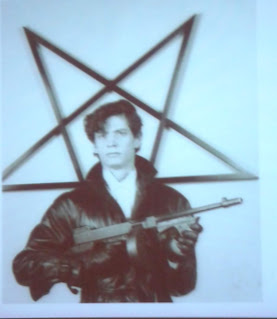
















































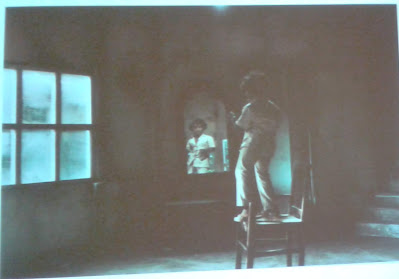
































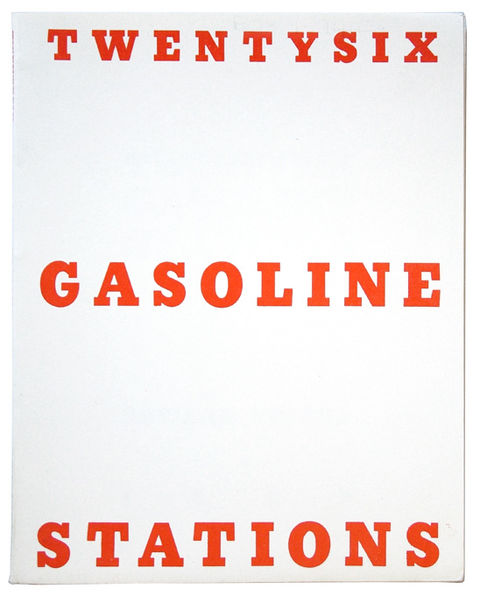

























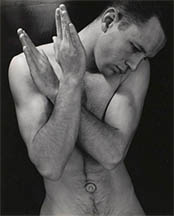











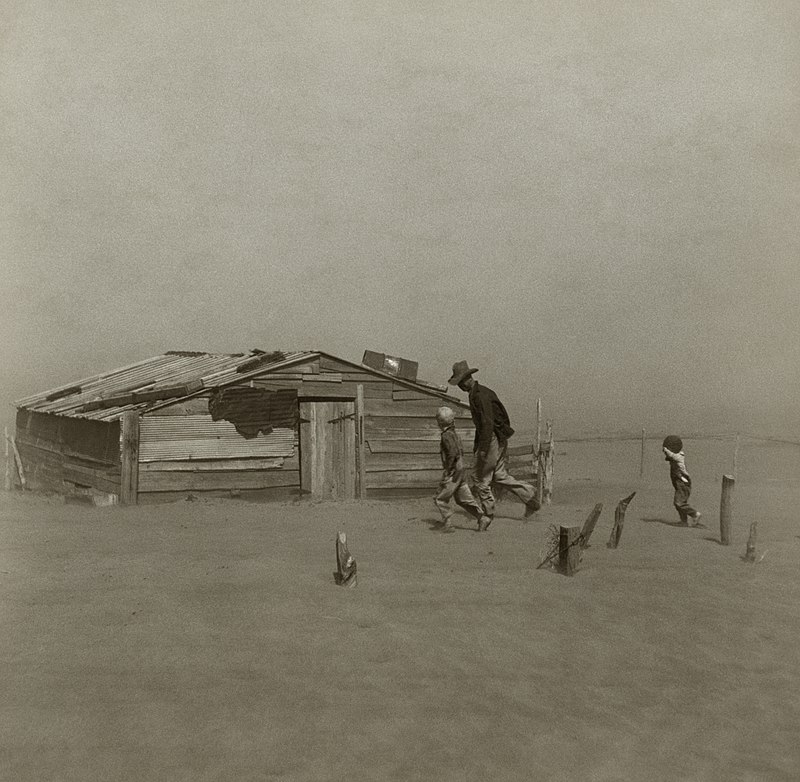










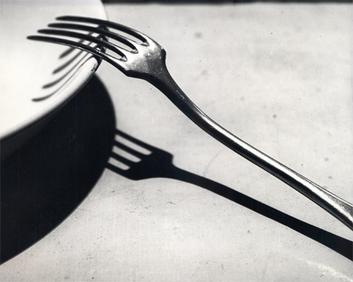








_-_1963.944.jpg)

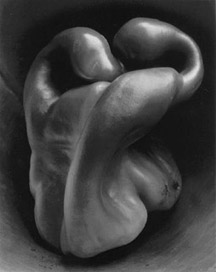










_-_n._0545_-_24c_-_Le_tre_grazie.jpg/800px-Gloeden%2C_Wilhelm_von_(1856-1931)_-_n._0545_-_24c_-_Le_tre_grazie.jpg)
_-_n._1409_r.jpg)
.jpg)
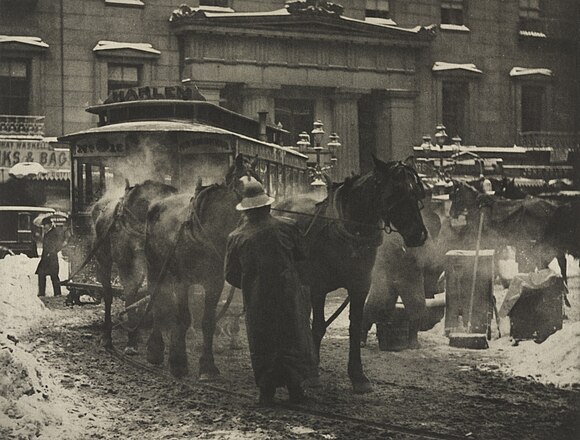
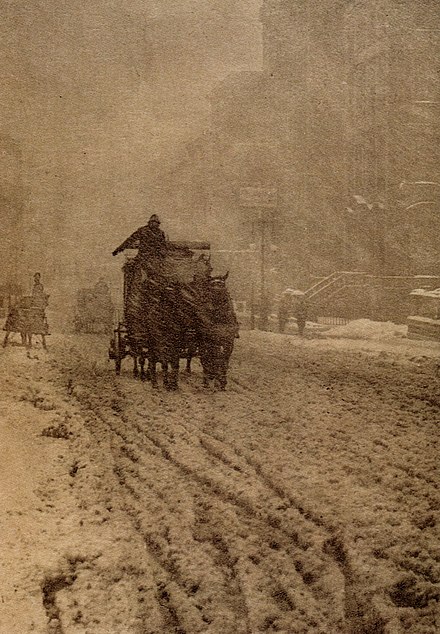



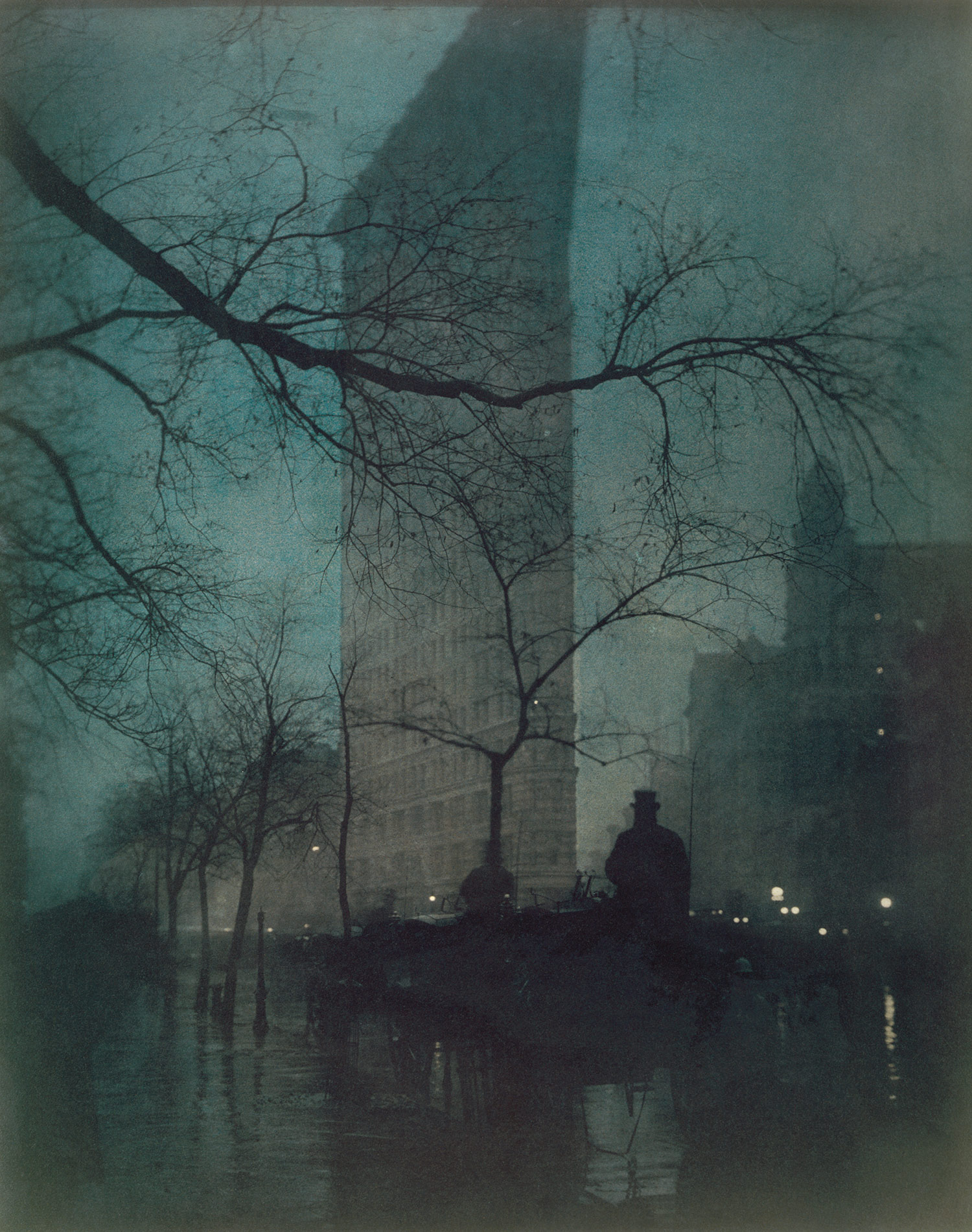

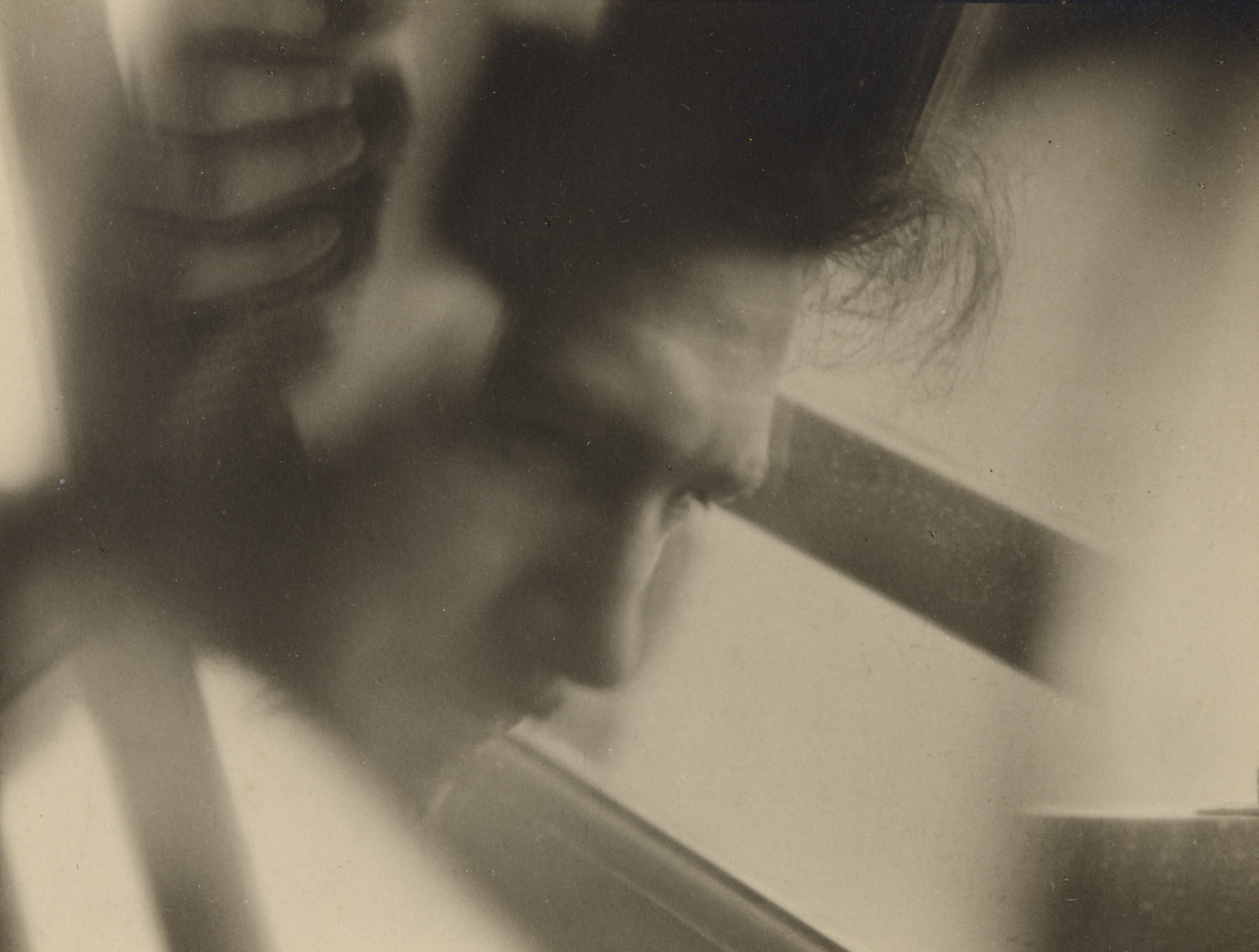


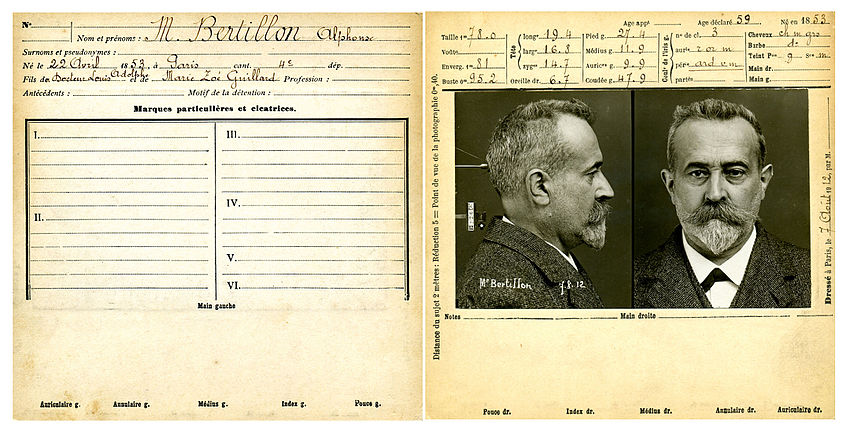

.jpg/1024px-Oscar-gustave-rejlander_two_ways_of_life_(HR%2C_sepia).jpg)



.jpg)

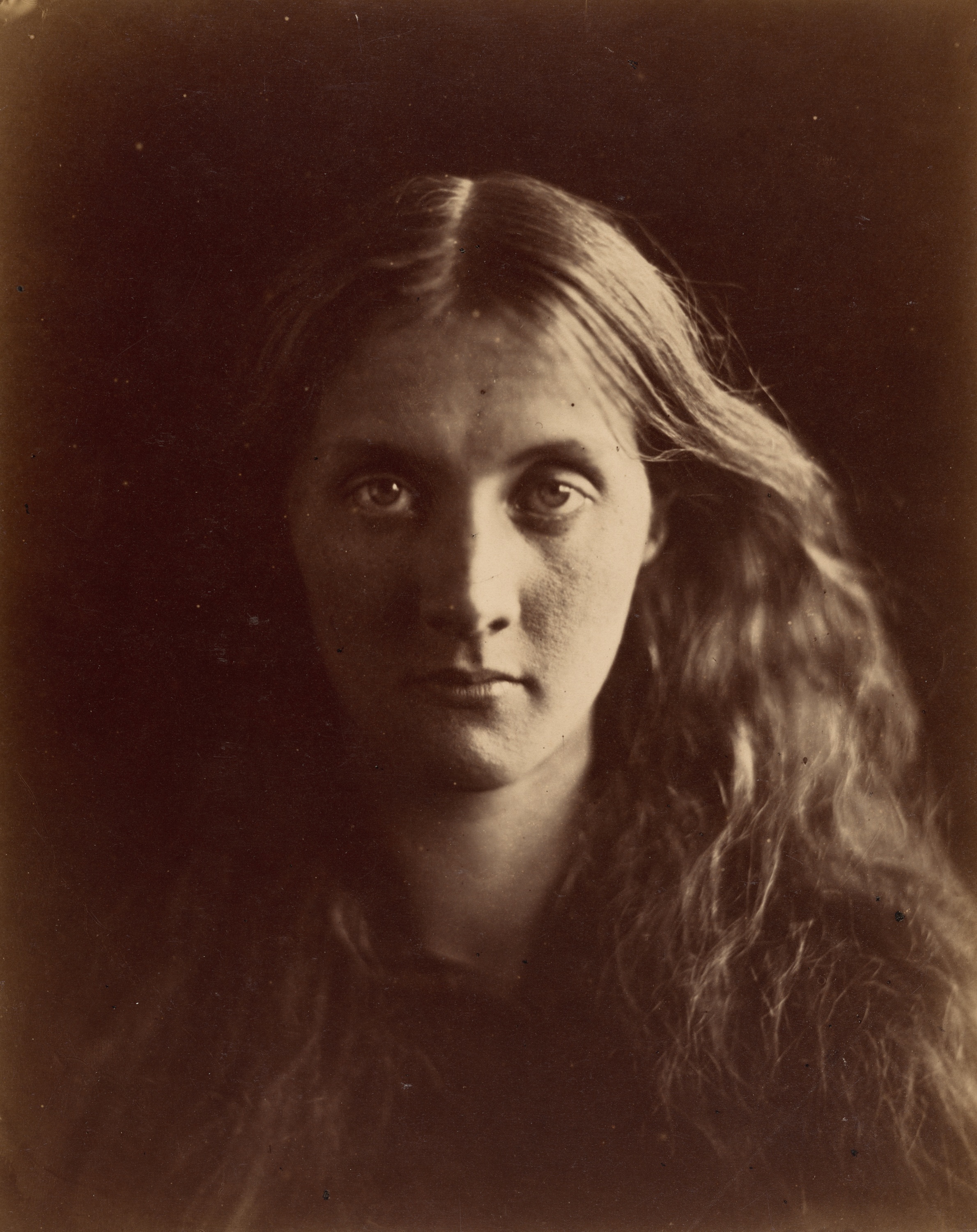


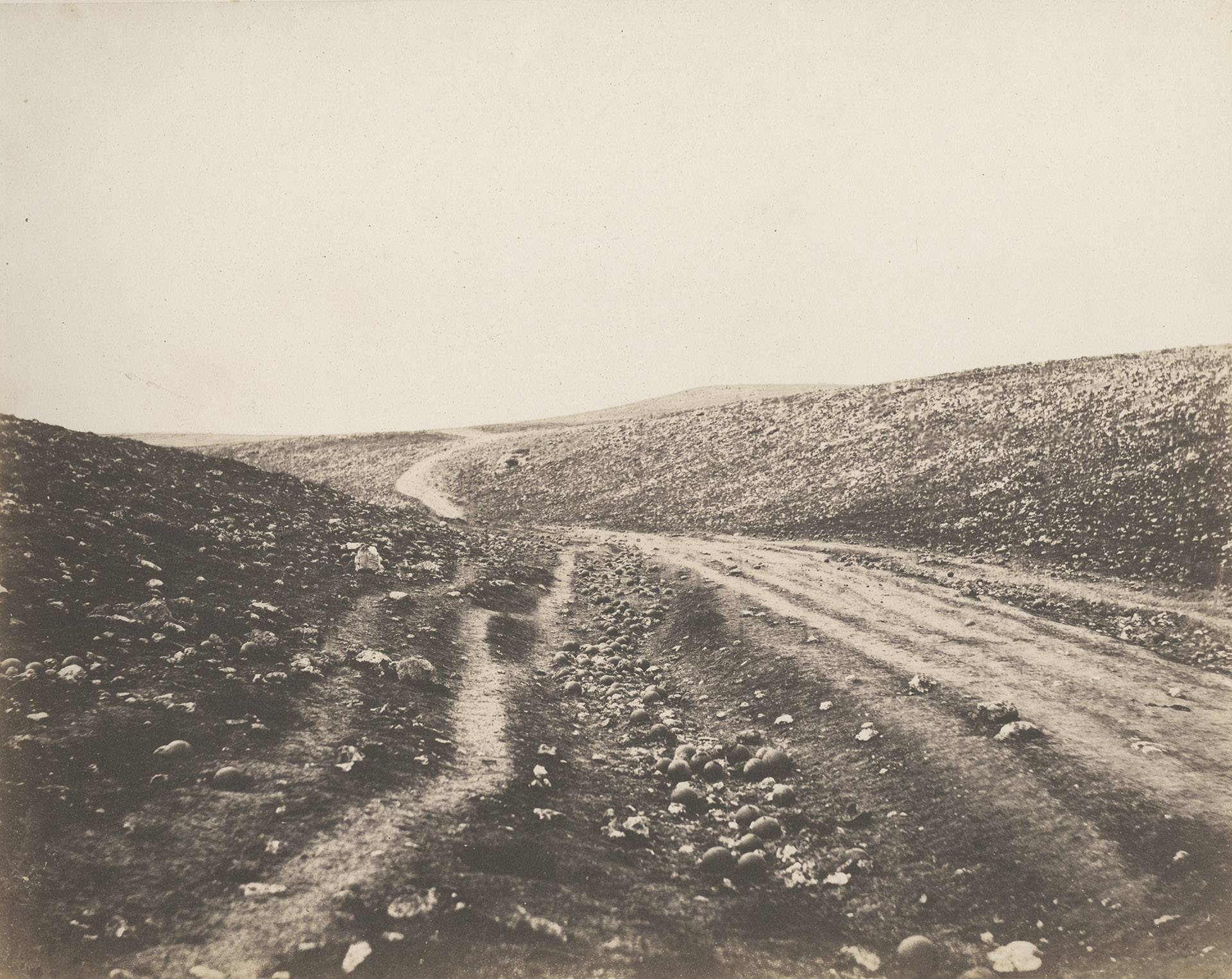



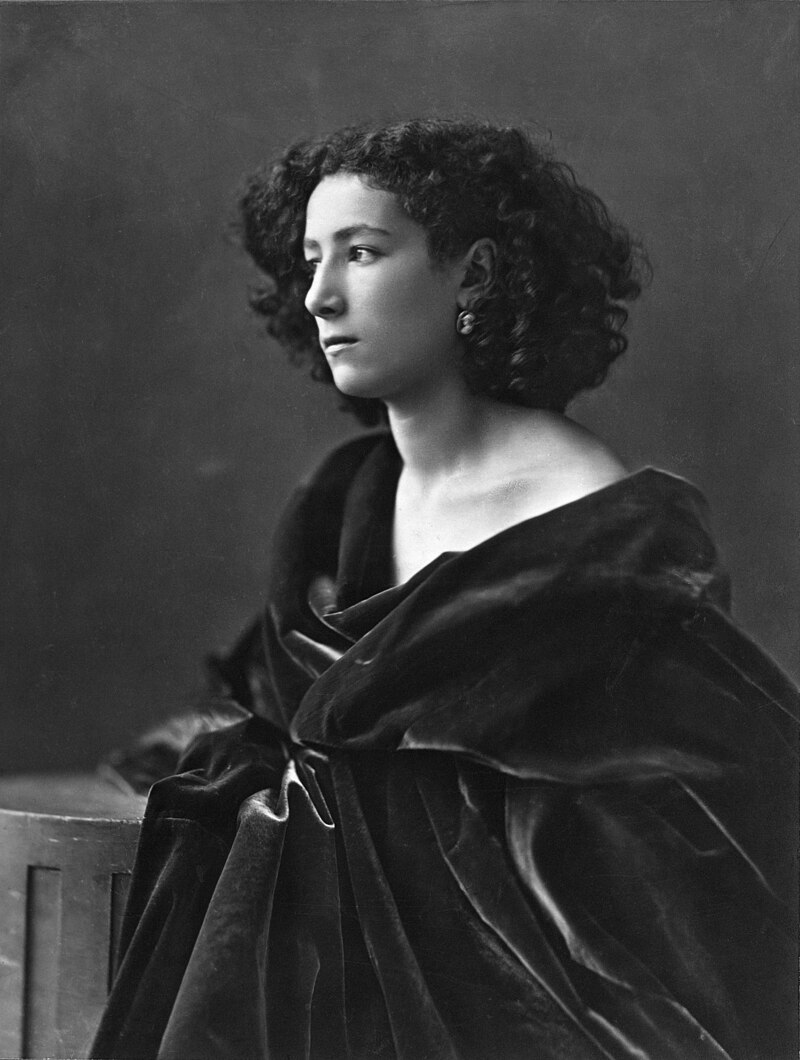




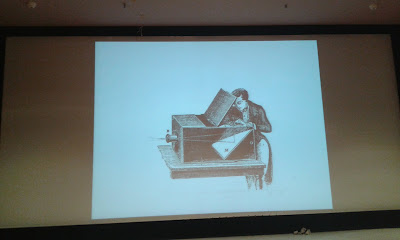

















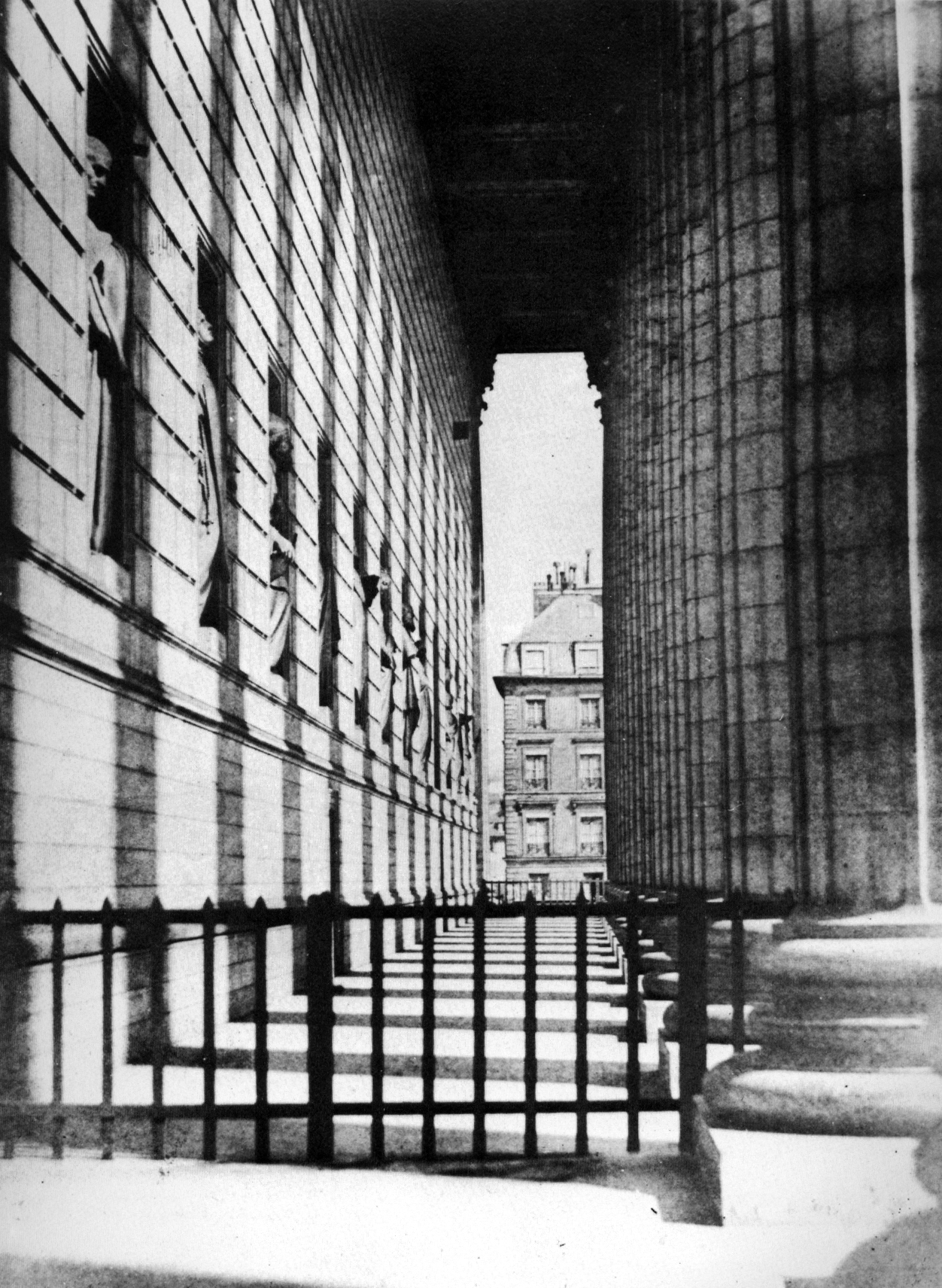




Δεν υπάρχουν σχόλια:
Δημοσίευση σχολίου